Don't wanna be here? Send us removal request.
Photo

🎃👀🎃 https://www.instagram.com/p/CVXQ6IsrkK5McBiw87bhmeiNJ_pVAlVuTwW_Q80/?utm_medium=tumblr
20 notes
·
View notes
Text
Clinique Pep-Start Eye Cream

Price: $27.50
Claims: Lightweight, refreshing eye cream hydrates, brightens. Perks up your look.
Delivers a rush of hydration and instant brightening. Its cool touch and de-puffing tip help tired, puffy eyes look wide-awake, refreshed. Over time, a peptide cocktail helps skin stay smooth, hold hydration, become more resilient. Oil-free formula works under and over makeup. Oil-Free. Non-Acnegenic. Ophthalmologist Tested. Appropriate for sensitive eyes and contact lens wearers.
Ingredients:
Water: Primarily used as a solvent in cosmetics and personal care products in which it dissolves many of the ingredients that impart skin benefits, such as conditioning agents and cleansing agents. Water also forms emulsions in which the oil and water components of the product are combined to form creams and lotions.
Glycerin: An emollient and humectant derived from vegetable oils that helps skin retain moisture.
Butylene Glycol: Commonly-used ingredient that has multiple functions in cosmetics, including as a texture enhancer. It’s similar to propylene glycol, but has a lighter texture.
Butyrospermum Parkii (Shea Butter): Extracted from the nuts of the karité tree, this emollient is naturally rich in vitamins and antioxidants.
Squalane: The saturated portion of emollient ingredient squalene, which is a natural component of human skin sebum (oil). It is a wonderfully moisturizing ingredient as well as being a source of replenishing fatty acids and antioxidants. Note that because it’s highly saturated, squalane is less prone to breaking down in the presence of air than less-saturated squalene.
Cetyl Esters: Synthetic wax used in cosmetics as a texture enhancer and emollient.
Dimethicone: A type of silicone, forms a permeable barrier that works to prevent moisture loss and impart a wonderfully silky feel.
Methyl Gluceth-20: Synthetic liquid that functions as a water-binding and skin-softening agent.
Polyethylene: Used as a stabilizer, binding agent, thickener, and film-forming agent.
Glycereth-26: Synthetic glycerin-based ingredient used as an emollient and thickening agent in cosmetics.
Polybutene: A oligomeric oil, sometimes derived from petroleum, that is used in its hydrogenated form, as a binder, epilating agent, thickener and lubricant. It is naturally tacky or sticky and is also used for its adhesive properties.
Sucrose: Monosaccharide that has hydrating properties for skin.
Magnolia Officinalis Bark Extract: Derived from the plant's bark; used to soothe skin.
Sigesbeckia Orientalis (St. Paul's Wort) Extract: Plant that contains several components that can cause a negative reaction on skin when it is exposed to sunlight; however, this is a bigger concern when St. John's wort is taken orally. Like most plants, it's a rich source of antioxidants.
Algae Extract: The hydrolyzed form of algae extract, and a rich source of polysaccharides for skin.
Molasses Extract (Saccharum Officinarum): Sugar canes are the main source of glycolic acid. An alpha hydroxy acid (AHA) used to help maintain natural pH levels and gently exfoliate surface skin cells.
Sapindus Mukurossi Fruit Extract: A plant extract that is a natural source of saponin, been shown to have skin-soothing and antioxidant properties
Palmitoyl Tetrapeptide-7: Synthetic peptide that's part of Matrixyl 3000, which also contains palmitoyl oligopeptide, and is believed to work as a skin-restoring ingredient with anti-aging benefits.This peptide is composed of four amino acids plus fatty acid palmitic acid to enhance stability and penetration into the skin. Peptides have different functions on skin, and this particular peptide, on its own or as part of Matrixyl 3000, helps to replenish skin's surface and calm visible signs of sensitization.
Whey Protein: A form of protein derived from milk. An animal-derived ingredient, whey protein functions as a hair-conditioning and skin-softening agent.
Palmitoyl Hexapeptide-12: Blend of the fatty acid palmitic acid with several amino acids, including glycine, histidine, and lysine, Also known as pal-KTTKS and formerly under the catchall term palmitoyl oligopeptide. Theoretically, many peptides have skin-restoring ability and this is one of the newer synthetic options that is believed to help skin look and act younger.
Trifluoroacetyl Tripeptide-2: Emulsifying, dispersing, antistatic, smearing and wetting ability. It can avoid the damage of residual substances to the skin's natural protective layer.
Caffeine: Stimulant; helps revitalize skin; helps encourage circulation; helps visibly tighten skin.
Phytosphingosine: Long-chain, complex fatty alcohol that functions as a water-binding agent and also has preservative qualities. It seems this ingredient can also be a skin-restoring ingredient.
Acetyl Hexapeptide-8: Water-binding properties and theoretical skin-restoring ability.
Palmitoyl Tripeptide-1: Also known as pal-GHK and palmitoyl oligopeptide, palmitoyl tripeptide-1 is a synthetic fatty acid-linked peptide that can help repair visible skin damage and strengthen skin’s underlying supportive elements. It’s categorized as a messenger peptide because of its ability to “tell” skin how to look better, specifically in regard to visibly fading signs of sun damage like wrinkles and rough texture. Some research has shown that this peptide has similar anti-aging benefits to retinol, but there’s no reason a person cannot use both ingredients for even greater benefits.
Yeast Extract: Large group of fungi that ferment sugars; yeast is a source of beta-glucan, which is a good antioxidant. The types of yeast used in cosmetic products are not harmful and in fact likely contribute to creating a healthier-looking skin surface due to their softening and conditioning action.
Glycine Soja (Soybean) Protein: Contains botanical ceramides used to protect and moisturize skin. Contains significant amounts of all the essential amino acids and is a good source of protein. It is derived from soybean amino acids and is rich in protein, minerals and vitamins, especially vitamin E. As well as for skin conditioning and skin firming because it is a natural emollient and moisturizer.
Caesalpinia Spinosa Gum: Working deep within the skin to boost moisture levels, this seed also strengthens your skin’s natural moisture barrier to help prevent future dehydration. It’s also high in vitamin C and B, as well as complex sugars.
Acrylates/C10-30 Alkyl Acrylate Crosspolymer: A synthetic ingredient used to enhance the texture of skincare and haircare products.
Glyceryl Polymethacrylate: Blend of glycerin and polymethacrylic acid that functions as a film-forming agent. It has a smooth finish and is used to enhance the texture and application of many skincare products.
Sucrose Stearate: The ester of stearic acid and sucrose (sugar), sucrose stearate works in cosmetics as an emollient, emulsifier, and cleansing agent. It can be animal-, plant-derived or synthetic, with the plant-derived version being most common. Sucrose stearate is considered safe as used in cosmetics and has been shown to help enhance the effectiveness of other ingredients.
Caprylyl Glycol: Skin and hair conditioning agent that may be plant-derived or synthetic. Often used as part of a preservative blend in cosmetics.
Peg-8: Cleansing Agent and emollient
Sodium Hyaluronate: The sodium salt of hyaluronic acid, which is a protein occurring in the skin. An excellent skin conditioner and humectant, it helps prevent skin dehydration.
Simethicone: Mixture of dimethicone with silica; related to silicones, but used as an antifoaming agent.
Polysorbate 20: A surfactant, emulsifier, and fragrance ingredient. Serve as a dispersing agent and mix oil and water, work as a fragrance solubilizer and stabilizer, act as a lubricator, and have a soothing effect on the skin
Carbomer: Group of synthetic texture enhancers used primarily to create gel-like formulations. High amounts of carbomers in a gel may result in the product rolling or balling up of cosmetic products on skin, but this phenomenon depends on other formulary steps taken to minimize this effect.
Sodium Hydroxide: An inorganic compound used to control the pH levels or serve as a buffering agent. Has the ability to dissolve grease, oils, fats and protein based deposits. Considered a strong irritant.
Dextran: Polysaccharide that has water-binding properties for skin.
Hexylene Glycol: A preservative and solvent and viscosity agent. It is used to thin out heavy compositions and create a thinner, more spreadable product. It may be irritating to some skin types.
Sodium Citrate: Used primarily to control the pH level of a product, this ingredient also has antioxidant and preservative properties.
Phenoxyethanol: A glycol ether and bactericide (that functions as a disinfectant, antiseptic or antibiotic) that is primarily used as a preservative. It is also seen as a fragrance additive.
Mica: Earth mineral included in products to give them sparkle and shine. The level and look of the shine mica provides depends on the color and how finely it’s milled. Mica's sheer, translucent and skin-hugging properties make it a popular ingredient in mineral powders. Mica powder reflects light from the face because of its glittering or shimmering properties, and can create the illusion of a smoother, softer and more radiant skin tone.
Titanium Dioxide: An earth mineral used in sunscreens that is capable of blocking both UVA and UVB rays; also used as a pigment.
My Thoughts: I usually love Clinique products however Clinique Pep-Start Eye Cream fell short for my expectations for the brand. Luckily I received a sample size from my January 2018 Play! by Sephora box. It came in a bright orange squeeze tube with a unique round shape applicator. I love that I don’t have to use my fingers for application, I just massage the product in with the round applicator. It helps a tiny bit with depuffing but I feel like it would work much better if it had a zamac tip instead of plastic.
The texture of Clinique Pep-Start Eye Cream is white and thin cream. Its easily spreadable on the lid and under eye area. A little goes a long way so this small sample size has lasted me a long time, even though I use it every day. The lightweight cream works perfectly under makeup. But I mainly wear it at night once I take off my makeup. It does hydrate the skin pretty well. My disappointment is that it didn’t do anything for my dark circles. It did give me a temporary fresh look but it doesn’t last longer than 3 hours.
Would I purchase Clinique Pep-Start Eye Cream? No because the results are only temporary, I can’t justify spending that much money for that reason.
Pros:
Received from January 2018 Play! by Sephora box
Sample size
Orange squeeze tube with round shaped applicator.
Don’t have to use fingers to apply
Helps with depuffing the eye area
Texture is thin & white
Easily spreadable
A little goes a long way
Lightweight
Wear under makeup
Hydrates
Cons:
Wish it had a zamac tip instead of plastic
Doesn’t help with dark circles
Temporary fresh look last for 3 hours
Expensive
If you found this review helpful please click on the heart or reblog. Feel free to reply with your thoughts on the product.
#Clinique Pep-Start Eye Cream#Clinique#eye cream#skincare#skincare blog#skincare blogs#skincare review#skincare reviews#skincare product#skincare products#Clinique Pep-Start Eye Cream review#Clinique Pep-Start Eye Cream reviews#beauty#beauty blog#beauty blogs#beauty review#beauty reviews#beauty product#beauty products#tumblr#tumblr review#tumblr reviews#makeup#makeup blog#makeup blogs#makeup review#makeup reviews#makeup product#makeup products#review
16 notes
·
View notes
Photo

Happy 9th Birthday to this fat fuck Kyra. May you continue to hoard pillows and blankets til your heart’s desire. 💜 https://www.instagram.com/p/CH_ONuBJh4rRz3da8U3em2gpAZ9XFh7lTP76ns0/?igshid=sr9nagooajps
8 notes
·
View notes
Photo

Happy 3rd birthday to Luna(tic) 😈 https://www.instagram.com/p/CH9fSNipWeeWie9apNpKurXv5j4CQLT-G8YuH00/?igshid=1cp04hipmyzz9
2 notes
·
View notes
Photo
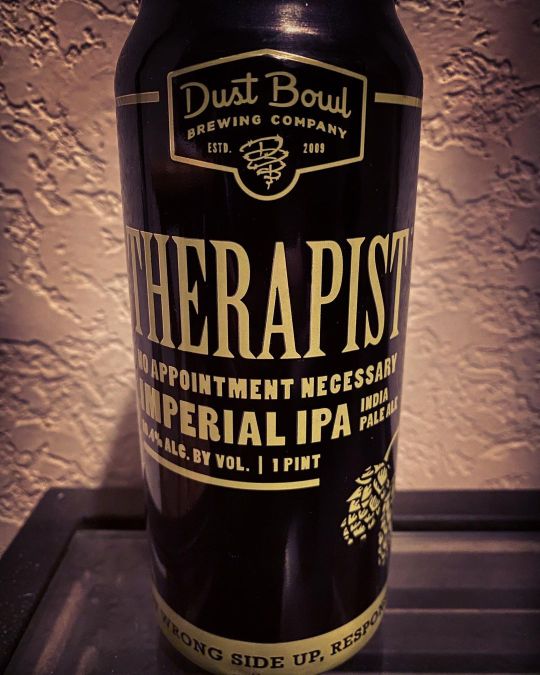
Late night session 🧐🍺 https://www.instagram.com/p/CH4ugonpiJDKCngbC5WPSFnylHTFufjOsQlLBw0/?igshid=12mpjjwrgrlmb
1 note
·
View note
Text
Vasanti Brighten Up! Exfoliator
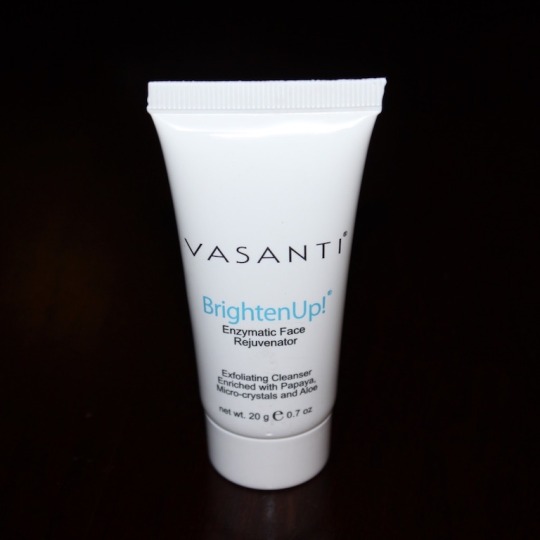
Price: $34
Claims: A gentle yet powerful facial exfoliator. This papaya and aloe enriched exfoliator will remove dead skin, reveal a radiant complexion and fight common skin concerns like dull skin, dark spots, acne scars, wrinkles & more. You'll see results after just one use.
Ingredients:
Aqua (Water): Primarily used as a solvent in cosmetics and personal care products in which it dissolves many of the ingredients that impart skin benefits, such as conditioning agents and cleansing agents. Water also forms emulsions in which the oil and water components of the product are combined to form creams and lotions.
Emulsifying Wax NF: Helps keep emulsions from separating into their oil and liquid components.
Aluminum Oxide: A crystalline compound of Aluminum and Oxygen. Primarily used as an abrasive and thickening agent, but also functions as an anti-caking agent and absorbent. It also acts as an insoluble carrier for mineral pigment, and is frequently mixed into mineral powder makeup. Because of its abrasive texture, many use these crystals to exfoliate and resurface the skin-particularly with Microdermabrasion.
Cetyl Alcohol: Fatty alcohol used as an emollient, emulsifier, thickener, and carrying agent for other ingredients. It is not an irritant and is not related to SD alcohol, denatured alcohol, or ethyl alcohol. Cetyl alcohol is considered safe for use in cosmetics.
Decyl Glucoside: Sugar-derived ingredient used as a gentle detergent cleansing agent.
Cocamidopropyl Betaine: Helps to clean or remove dirt and oil, creating foam when used with water
Glycerin: An emollient and humectant derived from vegetable oils that helps skin retain moisture.
Propanediol: A glycol that can enhance the absorption of ingredients into the skin. Propanediol can be derived naturally (from corn) or synthetically. It has hydrating properties that may leave a smooth, dewy finish. Propanediol is a well-tolerated ingredient, not likely to cause sensitivity.
Panthenol: Member of the B complex family of vitamins. A moisturizing humectant and emollient.
Glyceryl Stearate: It acts as a lubricant on the skin’s surface, which gives the skin a soft and smooth appearance. It easily penetrates the skin and slows the loss of water from the skin by forming a barrier on the skin’s surface. It has been shown to protect skin from free-radical damage as well. Used to stabilize products, decrease water evaporation, make products freeze-resistant, and keep them from forming surface crusts. Reduces the greasiness of oils used in certain cosmetics.
Caprylic/Capric Triglyceride: Derived from coconut oil and glycerin, it’s considered an excellent emollient and skin-replenishing ingredient. It’s included in cosmetics due to its mix of fatty acids that skin can use to replenish its surface and resist moisture loss. Also function as a thickener, but its chief job is to moisturize and replenish skin. This ingredient’s value for skin is made greater by the fact that it’s considered gentle.
Ricinus Communis (Castor) Seed Oil: Skin conditioning agent to maintain soft and supple skin.
Aloe Barbadensis (Aloe) Leaf Juice: Extracted from the leaves of the aloe plant; used as a skin softener, anti-irritant, and moisture replenisher.
Tocopheryl Acetate: Its substantiated benefits include enhancing the efficacy of active sunscreen ingredients, reducing the formation of free radicals from exposure to UV rays, promoting the healing process, strengthening the skin's barrier function, protecting the skin barrier's lipid balance, and reducing transepidermal water loss. Attributed with antioxidant, anti-aging, moisturizing, anti-inflammatory, and enhanced SPF properties, tocopherol acetate is valued both as a dietary supplement and skincare active.
Papain: Breaks down dead skin cells for easy removal, helps smooth your skin’s surface to uncover healthy glowing skin. Gently dissolves skin cells and debris, helps fade dark spots and evens out your skin tone. Also has natural acne treatment properties
Parfum: One or a blend of volatile and/or fragrant plant oils (or synthetically derived oils) that impart aroma and odor to products. These are often skin sensitizers because they are composed of hundreds of individual chemical components. Fragrance is a leading source of sensitivity to cosmetics.
Phenoxyethanol: A glycol ether and bactericide (that functions as a disinfectant, antiseptic or antibiotic) that is primarily used as a preservative. It is also seen as a fragrance additive.
Caprylyl Glycol: Skin and hair conditioning agent that may be plant-derived or synthetic. Often used as part of a preservative blend in cosmetics.
My Thoughts: I can’t recall where I received a sample size of Vasanti Brighten Up! Exfoliator, but I am glad I did because its pretty amazing. Vasanti Brighten Up! Exfoliator comes in a large white squeeze tube. It lasted me a long time even for something I used every other day. Its a gritty white paste that contains fine crystals. I only use a little less than a dime size amount each time, a little goes a long way so I never have to use more than that. I slightly damp my face then I scrub it in with small circular motions. I start in the center of my face then move outwards for about 2 minutes. What I love the most is how the crystal don’t dissolve away when I am using it. Once I am done I use warm water to wash it all off.
Vasanti Brighten Up! Exfoliator has some amazing results, on the first use I notice how incredibly soft my skin was. It creates a smooth canvas for my makeup, it takes away any flaky skin without drying it out. It quite gentle to use because it doesn’t make my skin red even for using it every other day. After 3 weeks of use I notice that my any acne marks I had were gone, however it didn’t even out my skin tone which was a bummer. It reduce my pores drastically, I never seen a product work so well for my pores. But no matter how long I used it I didn’t see a difference in wrinkles.
Would I purchase Vasanti Brighten Up! Exfoliator? Yes it works great in a lot of areas and last a long time. But I would only purchase it if it was on sale since the price point is a bit high.
Pros:
Large sample size
White squeeze tube
Gritty white paste
Contains fine crystals
A little goes a long way
Crystal doesn’t dissolve
Soft skin
Smooth base for makeup
Removes flaky skin
Doesn’t dry out skin
Gentle to use everyday
Doesn’t make skin red
Removes acne marks
Reduce pores
Cons:
Doesn’t even out skin tone
Doesn’t help with wrinkles
Expensive
If you found this review helpful please click on the heart or reblog. Feel free to reply with your thoughts on the product.
#Vasanti Brighten Up! Exfoliator#Vasanti#review#reviews#blog#blogs#heart#hearts#like#likes#love#loves#reblog#reblogs#skincare#skincare blog#skincare blogs#makeup#makeup blog#makeup blogs#makeup review#makeup reviews#makeup product#makeup products#skincare product#skincare products#beauty#beauty blog#beauty blogs#beauty review
3 notes
·
View notes
Text
Skin Laundry Hydrating Cream Face Wash
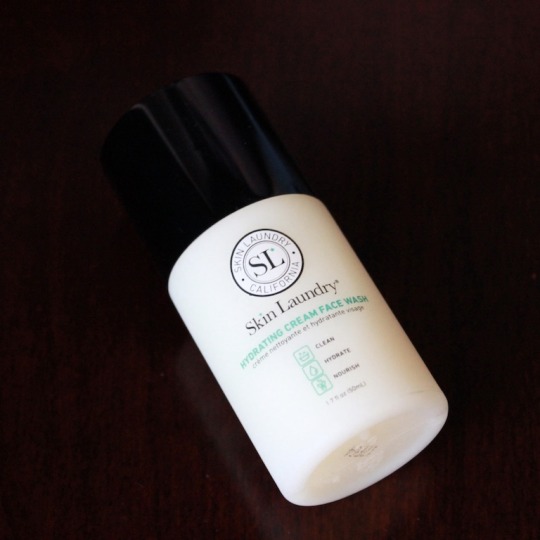
Price: $30
Claims: This soap and sulfate-free formula cleans and hydrates dry skin as it melts away dirt, makeup and impurities. Leaves skin clean, fresh and comfortable. Never dry.
Benefits:
Removes Dirt and Makeup
Hydrates and Calms Skin
Soap and Sulfate-Free
Ingredients:
Water: Primarily used as a solvent in cosmetics and personal care products in which it dissolves many of the ingredients that impart skin benefits, such as conditioning agents and cleansing agents. Water also forms emulsions in which the oil and water components of the product are combined to form creams and lotions.
Disodium Cocoamphodiacetate: Mild detergent cleansing agent derived from coconut; most often used in facial cleansers.
Limnanthes Alba (Meadowfoam) Seed Oil: It functions as an emollient and softening agent in skin- and hair-care products. This plant oil is exceedingly stable because it is primarily composed of long chain fatty acids.
Acrylates Copolymer: A stabilizer mostly used in styling products to set the hair, add body, and protect it from humidity. It possesses a multitude of functions and can work as a film forming agent, hair fixative agent, suspending agent and antistatic agent. It’s also sometimes used as a waterproofing agent, as well as an adhesive.
Cocamidopropyl Betaine: Helps to clean or remove dirt and oil, creating foam when used with water
Aloe Barbadensis Leaf Juice: Extracted from the leaves of the aloe plant; used as a skin softener, anti-irritant, and moisture replenisher.
Macadamia Ternifolia Seed Oil: An emollient used in skincare for its soothing and conditioning properties.
Panthenol: Member of the B complex family of vitamins. A moisturizing humectant and emollient.
Hexylene Glycol: A preservative and solvent and viscosity agent. It is used to thin out heavy compositions and create a thinner, more spreadable product. It may be irritating to some skin types.
Carbomer: Group of synthetic texture enhancers used primarily to create gel-like formulations. High amounts of carbomers in a gel may result in the product rolling or balling up of cosmetic products on skin, but this phenomenon depends on other formulary steps taken to minimize this effect.
Aminomethyl Propanol: An alkanolamine that comes in the form of either a colorless liquid or crystalline solid. Works to adjust PH levels.
Ethylhexylglycerin: A synthetic skin-softening agent also used as a preservative, a carrier, or suspending agent for other preservatives such as phenoxyethanol.
Caprylyl Glycol: Skin and hair conditioning agent that may be plant-derived or synthetic. Often used as part of a preservative blend in cosmetics.
Phenoxyethanol: A glycol ether and bactericide (that functions as a disinfectant, antiseptic or antibiotic) that is primarily used as a preservative. It is also seen as a fragrance additive.
Fragrance (Parfum): One or a blend of volatile and/or fragrant plant oils (or synthetically derived oils) that impart aroma and odor to products. These are often skin sensitizers because they are composed of hundreds of individual chemical components. Fragrance is a leading source of sensitivity to cosmetics.
My Thoughts: Skin Laundry Hydrating Cream Face Wash was very disappointing. But at least I didn’t pay full price for it. I received it in my October 2017 Play! by Sephora box. It comes in a cylinder squeeze tube. The texture is silky with an off white color. I use about nickel size amount and I massage my face with it for about 2 minutes, then I wash off with warm water. Immediately I felt my skin was silky smooth. I do love that it doesn’t dry out my skin, even when I use it everyday.
Honestly there is not a lot of good things to say about Skin Laundry Hydrating Cream Face Wash because it doesn’t do much for my skin. It removes dirt but it seems like only a surface layer of dirt is removed, I wish it was a little more powerfully in this area. When it comes to taking off makeup it sucks, especially removing mascara. I still have not been successful at fully removing my mascara with this. I would wake up with mascara on my pillow every morning!
Would I purchase Skin Laundry Hydrating Cream Face Wash? No its way too basic for my skin for that price point.
Pros:
Received in October 2017 Play! by Sephora box
Cylinder squeeze tube
Silky texture with off white color
Use a nickel size amount
Skin becomes silky smooth
Doesn’t dry out skin
Removes surface dirt
Cons:
Wish it was a bit more powerfully on removing direct beyond the surface
Doesn’t fully take off makeup
Expensive
If you found this review helpful please click on the heart or reblog. Feel free to reply with your thoughts on the product.
#Skin Laundry Hydrating Cream Face Wash#Skin Laundry#review#reviews#beauty#beauty reviews#beauty review#beauty blog#beauty blogs#beauty product#beauty products#skincare#skincare blog#skincare blogs#skincare review#skincare reviews#skincare product#skincare products#bittersweetjj#bittersweetjj blog#bittersweetjj blogs#bittersweetjj review#bittersweetjj reviews#product#products#sephora#Play! by Sephora#Play! by Sephora box#product review#product reviews
10 notes
·
View notes
Text
Sephora Collection Lip Balm & Scrub in Honey
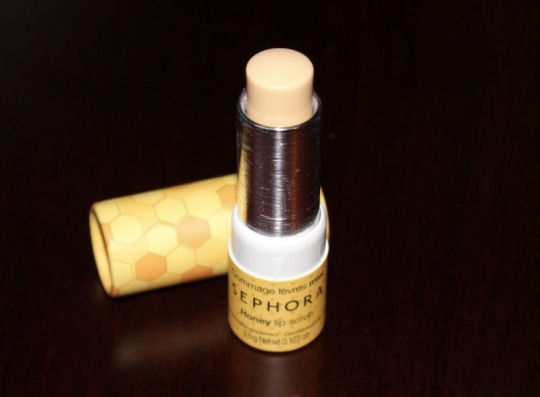
Price: $7.00
Color: Honey - exfoliating & smoothing (scrub)
Claims: A range of lip balms and scrubs with a melting and gliding texture that hydrate and nurture lips all day long.
Balms nourish your lips and provide the following targeted lip care benefits, while the lip scrubs soften and prep lips for a treatment or lipstick thanks to gentle sugar exfoliants. Each features a fun flavor and ingredients that suit different concerns.
Ingredients:
Octyldodecanol: An emollient and emulsifier and solvent. It is a clear, colorless liquid that is often seen as a thickener in moisturizers because of its lubricating and emollient properties. Helps to form emulsions and prevents formulas from separating into its oil and liquid components. It can also reduce the tendency of finished products to generate foam when shaken. Acts as a lubricant on the skin, giving a soft, silky feel.
Polybutene: A oligomeric oil, sometimes derived from petroleum, that is used in its hydrogenated form, as a binder, epilating agent, thickener and lubricant. It is naturally tacky or sticky and is also used for its adhesive properties.
Polyethylene: Form of plastic (synthetic polymer) that has numerous functions in cosmetics products. Rounded polyethylene beads serve as an abrasive agent in many facial scrubs, often used instead of overly abrasive alternatives like walnut shells and ground fruit pits. Also used as a stabilizer, binding agent, thickener, and film-forming agent.
Ricinus Communis (Castor) Seed Oil: Skin conditioning agent to maintain soft and supple skin.
Vp/Hexadecene Copolymer: Synthetic polymer that functions as a binding agent, texture enhancer, and dispersing agent.
Diisostearyl Malate: A skin conditioning agent and emollient.
Caprylic/Capric Triglyceride: Derived from coconut oil and glycerin, it’s considered an excellent emollient and skin-replenishing ingredient. It’s included in cosmetics due to its mix of fatty acids that skin can use to replenish its surface and resist moisture loss. Also function as a thickener, but its chief job is to moisturize and replenish skin. This ingredient’s value for skin is made greater by the fact that it’s considered gentle.
Cera Microcristallina (Microcrystalline Wax): Plastic-type, highly refined wax derived from petroleum and purified for use in cosmetics. Used as a thickener and to give products a semi-solid to solid smooth texture.
Dicalcium Phosphate: Opacifying Agent
Glyceryl Behenate/Eicosadioate: A mixture of esters of glycerin, along with behenic and eicosadioic acids, its works as a thickener and stabilizing agent in makeup and skincare products. The independent cosmetic ingredient review has found it is safe as used in cosmetics.
Propylene Carbonate: Liquid used as a solvent and film-forming agent.
Synthetic Wax: A wax derived from a mixture of various oils. It functions as a binding and stabilizing agent and can help enhance a product's texture.
Trehalose: Plant sugar that has hydrating properties for skin.
Disteardimonium Hectorite: A vegetable-derived suspending agent used to thicken oil-based products and serve as a stabilizer for emulsions
Fragrance: One or a blend of volatile and/or fragrant plant oils (or synthetically derived oils) that impart aroma and odor to products. These are often skin sensitizers because they are composed of hundreds of individual chemical components. Fragrance is a leading source of sensitivity to cosmetics.
Titanium Dioxide: An earth mineral used in sunscreens that is capable of blocking both UVA and UVB rays; also used as a pigment.
Mica: Earth mineral included in products to give them sparkle and shine. The level and look of the shine mica provides depends on the color and how finely it’s milled. Mica's sheer, translucent and skin-hugging properties make it a popular ingredient in mineral powders. Mica powder reflects light from the face because of its glittering or shimmering properties, and can create the illusion of a smoother, softer and more radiant skin tone.
Iron Oxides: Natural oxides of iron (iron combined with oxygen); pigments are used to enhance colors in cosmetics.
Citric Acid: An alpha hydroxy acid and astringent with antioxidant properties; used to help skin maintain its natural pH level or adjust the pH of a product.
Dipentaerythrityl Tetrahydroxystearate/Tetraisostearate: Skin conditioning. Viscosity controlling.
Butyrospermum Parkii (Shea Butter): Extracted from the nuts of the karité tree, this emollient is naturally rich in vitamins and antioxidants.
Hydrogenated Vegetable Oil: Skin conditioning agent and viscosity increasing agent.
Sodium Saccharin: A sweetener, to give them a pleasant flavor.
Mel Extract (Honey Extract): Honey’s primary use in skincare products is related to its potent antioxidant properties; however, it’s role in helping wounds heal has been shown to have some benefits in comparison to traditional medicines and procedures. Honey forms a barrier on skin that can help soothe and protect.
My Thoughts: I thought it was very interesting to have a lip scrub in the form of a twist up tube. I saw Sephora Collection Lip Balm & Scrub in Honey was on sale for $6 so I decided to give it a try. I was surprised to find out that the twist up tube outer layer is made of cardboard. I was worried that it would be easily damaged over time but it ended up being very sturdy. Not only very secure but also pretty, with its yellow honeycomb design.
Sephora Collection Lip Balm & Scrub in Honey smells of good with a hint of honey. Its a gentle exfoliator, the sugar melts within 30 seconds so its best for mild chapped lips. After the sugar melts it becomes a normal lip balm that hydrates decently. I typically used this every night since its so gentle. When I had heavier chapped lips this did not work for me, I would need something that doesn’t melt away so quickly.
Would I purchase Sephora Collection Lip Balm & Scrub in Honey again? Yes I do like the idea of a mild exfoliator that turns into a balm.
Pros:
Twist up tube
Sturdy cardboard packaging
Yellow honeycomb design
Hint of honey scented
Gentle exfoliator
Sugar melts into a balm
Best for mild chapped lips
Can be used once a day
Cons:
Will not work with heavy chapped lips
If you found this review helpful please click on the heart or reblog. Feel free to reply with your thoughts on the product.
#Sephora Collection Lip Balm & Scrub in Honey#Sephora Collection#review#Reviews#beauty#beauty review#beauty reviews#beauty blog#beauty blogs#beauty product#beauty products#makeup#makeup blog#makeup blogs#makeup review#makeup reviews#makeup product#makeup products#make up#make up blog#make up blogs#make up review#make up reviews#make up product#make up products#skincare#skincare blog#skincare blogs#skincare review#skincare reviews
8 notes
·
View notes
Text
Too Faced Mascara Melt-Off Mascara Remover
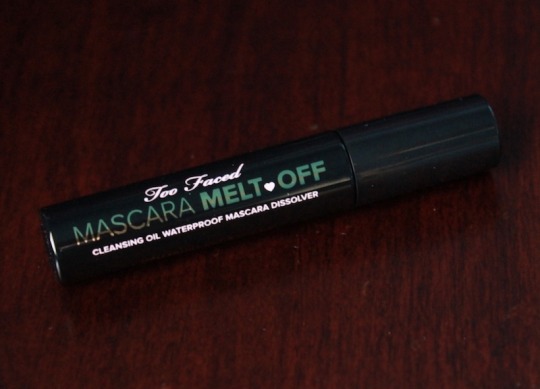
Price: $18
Claims: Remove every trace of both waterproof and regular mascara with the most effective, gentlest remover that coats lashes base-to-tip with our conditioning, oil-based formula.
Conditioning, oil-based formula dissolves even the strongest waterproof mascara
Antioxidant-rich Green Tea Extract infused to protect lashes
Rice Lipids Extract to condition lashes
Ingredients:
Neopentyl Glycol Dicaprylate/Dicaprate: Used as an emollient and texture enhancer.
Isohexadecane: Synthetic, dry-finish ingredient with a powder-like finish. Used as a cleansing agent and texture enhancer.
Disteardimonium Hectorite: A vegetable-derived suspending agent used to thicken oil-based products and serve as a stabilizer for emulsions
Propylene Carbonate: Liquid used as a solvent and film-forming agent.
Di-PPG-3 Myristyl Ether Adipate: Derivative of myristyl alcohol (a fatty alcohol) and adipic acid (a buffering and neutralizing ingredient). It is used as a skin-conditioning agent and solvent in cosmetics.
Squalane: The saturated portion of emollient ingredient squalene, which is a natural component of human skin sebum (oil). It is a wonderfully moisturizing ingredient as well as being a source of replenishing fatty acids and antioxidants. Note that because it’s highly saturated, squalane is less prone to breaking down in the presence of air than less-saturated squalene.
Oryza Sativa (Rice) Extract: This emollient oil is an excellent skin conditioner and antioxidant.
Hexyldecanol: A synthetic, non-drying fatty alcohol used as an emollient and skin-softening agent.
Glycine Soja (Soybean) Oil: Contains botanical ceramides used to protect and moisturize skin. Contains significant amounts of all the essential amino acids and is a good source of protein. It is derived from soybean amino acids and is rich in protein, minerals and vitamins, especially vitamin E. As well as for skin conditioning and skin firming because it is a natural emollient and moisturizer.
Bisabolol: Soothing agent typically extracted from chamomile, but also derived synthetically.
Cetylhydroxyproline Palmitamide: This preservative free wax is an excellent compound to maintain intact skin and hair as well as to support the repair of damaged skin and hair.
Stearic Acid: Fatty acid used as an emollient and emulsifier. It has been shown to protect skin's surface against water loss and help shore up skin's protective barrier. Stearic acid may be synthetic or animal-derived.
Rapeseed Oil: Nonfragrant oil that has emollient and potential antioxidant properties for skin and is a rich source of omega-3 and omega-6 fatty acids.
Camellia Sinensis Leaf Extract: Tea plant native to Asia that helps fight free radicals; known for its antioxidant and anti-irritant properties.
Phenoxyethanol: A glycol ether and bactericide (that functions as a disinfectant, antiseptic or antibiotic) that is primarily used as a preservative. It is also seen as a fragrance additive.
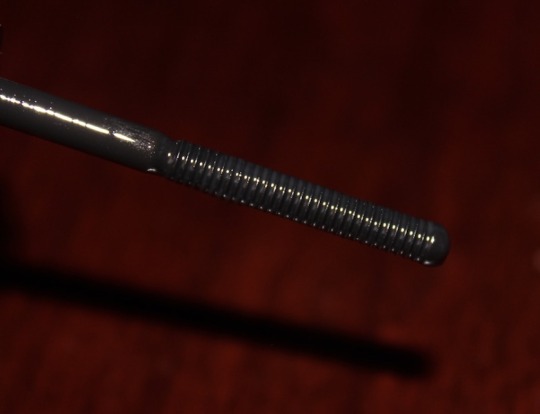
My Thoughts: When I first picked up Too Faced Mascara Melt-Off Mascara Remover I thought it was a mascara. I notice that it had an oil base so I had to double check what I actually picked up. I was quiet please when I found out this was a mascara remover, I wish I knew it existed sooner. Too Faced Mascara Melt-Off Mascara Remover comes in slim black mascara tube, with a plastic wand that has little ridges and groves. The wand helps disperse the cleansing oil from root to tip of the lash.
I coat Too Faced Mascara Melt-Off Mascara Remover onto my lashes and also apply it to my eyeliner. The wand tip makes it easy to apply the cleansing oil directly over my eyeliner. I wait about 2 minutes, while waiting I take off the rest of my face makeup with a makeup wipe. The waiting period is important since the oil has to breakdown the mascara and eyeliner. Once the 2 minutes are over I take a makeup wipe or cotton pad and gently wipe the mascara and eyeliner off.
And just like that Too Faced Mascara Melt-Off Mascara Remover allows to remove all the mascara and eyeliner off without harsh rubbing. Its always important to be gentle around the eye area since its so delicate, this product makes it easier to do so. No more pulling out my lashes when I take my makeup off. With every use my lashes get softer too. I love that the next morning I don’t wake up with raccoon eyes!
Would I purchase Too Faced Mascara Melt-Off Mascara Remover? Yes, but only when it goes sale. This cleansing oil isn’t worth the price point for just removing mascara and eyeliner. I plan on using the wand with another cleansing oil.
Pros:
Oil base
Slim black mascara tube
Plastic wand with ridges and groves
Wand help coat the lashes
Use for mascara & eyeliner
Wand tip helps for applying on eyeliner
2 minutes for the oil to breakdown makeup
Wipe off with makeup wipes or cotton pad
Removes all mascara & eyeliner
No harsh rubbing required
No more pulling out lashes
Softens lashes
No raccoon eyes.
Wand can be reused with different cleansing oil
Cons:
Expensive
If you found this review helpful please click on the heart or reblog. Feel free to reply with your thoughts on the product.
#Too Faced Mascara Melt-Off Mascara Remover#Too Faced#Too Faced Cosmetics#Mascara remover#Mascara Review#Mascara Reviews#beauty#beauty blog#beauty blogs#beauty review#beauty reviews#beauty product#beauty products#tumblr#tumblr review#tumblr reviews#tumblr product#tumblr products#skincare#skincare review#skincare reviews#skincare product#skincare products#bittersweetjj#bittersweetjj blog#bittersweetjj blogs#bittersweetjj review#bittersweetjj reviews#blogs#blog
0 notes
Text
H2O+ Oasis Hydrating Treatment

Price: $38
Claims: This water-gel moisturizer instantly quenches skin and provides ongoing moisture. Clinically proven to more than double skin's hydration and hydrates skin for 24 hours.
Ingredients:
Water: Primarily used as a solvent in cosmetics and personal care products in which it dissolves many of the ingredients that impart skin benefits, such as conditioning agents and cleansing agents. Water also forms emulsions in which the oil and water components of the product are combined to form creams and lotions.
Propylene Glycol: A versatile moisturizer. Propylene Glycol acts by retaining the moisture content of skin or the formula, preventing the escape of moisture or water.
Glycerin: An emollient and humectant derived from vegetable oils that helps skin retain moisture.
Dimethicone: A type of silicone, forms a permeable barrier that works to prevent moisture loss and impart a wonderfully silky feel.
Laminaria Digitata Extract: Which helps skin revitalization and supports collagen and elasticity.
Sea Salt: Can be effective as a topical scrub, but if left on skin, it can increase the risk of a sensitized reaction.
Phospholipids: Emollients and Skin-Replenishing. Type of lipid (fat) composed of glycerol, fatty acids, and phosphate.
Nymphaea Coerulea Flower Extract: Blue Lotus extract is a powerhouse antioxidant with anti-inflammatory benefits known to combat against free radical damage
Zostera Marina Extract: It keeps the skin firm and luminous by boosting the horny cell layer’s moisture-retaining function.
Diatomaceous Earth: Light-colored porous rock composed of the skeletons of minute sea creatures called diatoms. Typically used as an abrasive material in scrub products.
Sodium Carrageenan: Seaweed gum used in cosmetics as a thickening agent with water-binding properties.
Magnesium Chloride: A salt compound used to increase viscosity.
Potassium Chloride: Controls the consistency of a product
Leuconostoc / Radish Root Ferment Filtrate: Can be used as the sole preservative.
Panthenol: Member of the B complex family of vitamins. A moisturizing humectant and emollient.
Sorbitol: A humectant that helps skin feel smoother and less dry.
Retinyl Palmitate: A form of vitamin A that is used to promote natural cell turnover, elasticity, and suppleness and minimize the appearance of fine lines.
Magnesium Ascorbyl Phosphate: Form of vitamin C that is considered stable and is an effective antioxidant for skin. Increases skin’s hydration levels as well as being effective for calming factors in skin that can lead to excess oil and signs of sensitization.
Tocopheryl Acetate: Its substantiated benefits include enhancing the efficacy of active sunscreen ingredients, reducing the formation of free radicals from exposure to UV rays, promoting the healing process, strengthening the skin's barrier function, protecting the skin barrier's lipid balance, and reducing transepidermal water loss. Attributed with antioxidant, anti-aging, moisturizing, anti-inflammatory, and enhanced SPF properties, tocopherol acetate is valued both as a dietary supplement and skincare active.
Lecithin: Phospholipid found in egg yolks and plants. Widely used in cosmetics as an emollient and water-binding agent. Also has skin-restoring ability.
Sodium Metabisulfite: An inorganic salt used as a disinfectant and preservative agent. It is also considered a reducing agent that donates hydrogen molecules to other substances. Sometimes function as an antioxidant, preventing or slowing deterioration of formulas caused by chemical reactions with oxygen.
Zinc PCA: A synthetic skin-conditioning ingredient derived from zinc. Research has shown it has anti-aging benefits due to its ability to thwart destructive enzymes in skin that can damage its surface and lead to an aged, wrinkled appearance.
Sorbic Acid: Preservative derived from mountain ash berries or manufactured synthetically.
Carbomer: Group of synthetic texture enhancers used primarily to create gel-like formulations. High amounts of carbomers in a gel may result in the product rolling or balling up of cosmetic products on skin, but this phenomenon depends on other formulary steps taken to minimize this effect.
PEG-12 Dimethicone: A silicone-based polymer used to give formulas a smooth feel, promote spreadability, and add lubrication.
Ethylhexylglycerin: A synthetic skin-softening agent also used as a preservative, a carrier, or suspending agent for other preservatives such as phenoxyethanol.
Xanthan Gum: Natural ingredient used as a thickening agent, texture enhancer, and to stabilize emulsions, which is a general term for mixtures of unlike substances such as oil and water.
Benzyl Alcohol: Organic alcohol that occurs naturally in some fruits (apricots, cranberries) and teas. Its chief function in cosmetics is as a preservative, and it’s among the least sensitizing preservatives in use. High amounts of benzyl alcohol can impart a noticeable floral-like scent to products, as it is part of the fragrance makeup of some essential oils such as jasmine. As a volatile alcohol, it can pose a risk of sensitivity when used in high amounts, but is considered safe as used in cosmetics.
Caprylyl Glycol: Skin and hair conditioning agent that may be plant-derived or synthetic. Often used as part of a preservative blend in cosmetics.
Glyceryl Caprylate: A co-emulsifier also restores the oils of the skin, regulates the skin moisture and acts as a humidifier to the skin.
Potassium Sorbate: Used as a preservative, almost always used in conjunction with other preservatives.
Sodium Benzoate: A preservative.
Benzalkonium Chloride: Used as a preservative in skincare products. It can be a skin sensitizer.
Caprylic/Capric Triglyceride: Derived from coconut oil and glycerin, it’s considered an excellent emollient and skin-replenishing ingredient. It’s included in cosmetics due to its mix of fatty acids that skin can use to replenish its surface and resist moisture loss. Also function as a thickener, but its chief job is to moisturize and replenish skin. This ingredient’s value for skin is made greater by the fact that it’s considered gentle.
Citric Acid: An alpha hydroxy acid and astringent with antioxidant properties; used to help skin maintain its natural pH level or adjust the pH of a product.
Disodium Phosphate: Function as buffering agents
Benzophenone-4: A photostabilizer and sunscreen agent used for its ability to absorb UV rays. It helps prevent the integrity of other cosmetic ingredients from deteriorating under the sun. Though it covers UVB and short UVA (UVA-2) range rays, it's an inadequate sunscreen agent when used alone.
Polysorbate 80: A surfactant and emulsifier because of its ability to help other ingredients dissolve in a solvent in which they normally would not be able to dissolve. It can also help to reduce surface tension of substances that need to be emulsified.
Disodium EDTA: Used as a chelating, meaning it prevents ingredients in a formula from binding with trace elements (mainly minerals) that can be present in water.
Triethanolamine: Used in cosmetics as a pH balancer and emulsion stabilizer.
Phenoxyethanol: A glycol ether and bactericide (that functions as a disinfectant, antiseptic or antibiotic) that is primarily used as a preservative. It is also seen as a fragrance additive.
Parfum / Fragrance: One or a blend of volatile and/or fragrant plant oils (or synthetically derived oils) that impart aroma and odor to products. These are often skin sensitizers because they are composed of hundreds of individual chemical components. Fragrance is a leading source of sensitivity to cosmetics.
Linalool: Fragrant component of lavender and coriander that can be a potent skin sensitizer. Colorless liquid with a soft, sweet odor.
My Thoughts: H2O+ Oasis Hydrating Treatment comes in a simple white jar. I love jars because I can actually use all the product in it unlike tubes which leads to product waste. However with jars its more prone to exposure to bacteria each time I use it since I have to dip my fingers into it.
H2O+ Oasis Hydrating Treatment is a beautiful turquoise blue gel. The gel texture is perfect since it is not on the watery side by more thick. Even though it is thick it doesn’t feel heavy its actually pretty lightweight. Once applied it does absorb fairly quickly, so I mainly use this before I put on my makeup. A little goes a long way, over applying can cause my skin to be sticky and takes a bit for it to be fully absorbed.
I am obsessed with H2O+ Oasis Hydrating Treatment, it leaves my skin feeling plumper and smoother. Every time I use it my skin feels fresh and clean. On days I don’t want to wear makeup I use this because it gives my skin a lovely glow finish. I have normal to dry skin and it keeps me hydrated all day. However if you have very dry skin I doubt this will hydrate your skin that well.
Would I purchase H2O+ Oasis Hydrating Treatment again? Yes its lightweight and hydrating.
Pros:
White jar packaging
No product waste
Turquoise blue gel texture
Thick but lightweight
Absorbs fairly quickly
A little goes a long way
Pump & smooth skin
Glow finish
Hydration all day
Fresh & clean feel
Cons:
Jar can lead to bacteria exposure
Over application can cause stickiness
Not for very dry skin
If you found this review helpful please click on the heart or reblog. Feel free to reply with your thoughts on the product.
#H2O+ Oasis Hydrating Treatment#H2O+ Oasis#H2O+#H2O+ Oasis Hydrating Treatment review#H2O+ Oasis Hydrating Treatment reviews#Tumblr review#tumblr reviews#tumblr blog#tumblr blogs#review#reviews#blog#blogs#beauty#beauty blog#beauty blogs#beauty review#beauty reviews#beauty products#beauty product#skincare#skincare blog#skincare blogs#skincare review#skincare reviews#skincare product#skincare products#bittersweetjj#bittersweetjj blog#bittersweetjj review
3 notes
·
View notes
Text
Glamglow Supermud Clearing Treatment
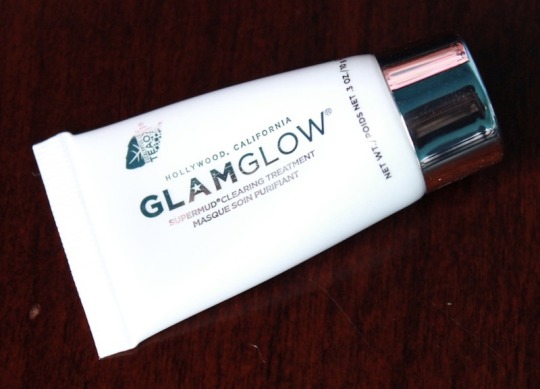
Price: $25 / $59 / $82
Claims: SUPERMUD is our most advanced clearing treatment and #1 best-selling mud mask. Fights problem skin and skin imperfections with a blend of six acids, activated-x charcoal, and K-17 clay. The SUPER 6 Acid Blend helps loosen dead skin cells to exfoliate and sweep them away, leaving fresh, smooth skin behind.
Visibly, instantly clears the complexion. All you need is a thin layer.
We love it for:
Pores
Oiliness
Blemishes
Problem Skin
Key Benefits:
CLEARING. Visibly, instantly clears the complexion
CLARIFYING. Targets clogged pores, excess oil, and dead skin cells
PORE REFINING. Toxins and dirt are removed from the deep within the pores
This product tingles to let you know it is working. Skin may appear flushed for a short time. This is normal!
Ingredients:
Water: Primarily used as a solvent in cosmetics and personal care products in which it dissolves many of the ingredients that impart skin benefits, such as conditioning agents and cleansing agents. Water also forms emulsions in which the oil and water components of the product are combined to form creams and lotions.
Kaolin: A fine white clay powder; used to absorb water and oil secreted by the skin, including excess sebum.
Magnesium Aluminum Silicate: A naturally occurring mineral derived from refined and purified clay that is used primarily as a thickener in cosmetics and beauty products. It is naturally of a flaky, white consistency and is used most often as a filler. It is also important to note that Magnesium Aluminum Silicate has unusually large molecules; because of these large molecules, it is unable to be absorbed into the skin.
Mandelic Acid: A type of alpha hydroxy acid (AHA), also known as amygdalic acid. An effective exfoliant, more tolerable for those with sensitive skin. Is also light-sensitive and must be packaged in an opaque container to remain effective.
Eucalyptus Globulus Leaf: Derived from the leaves of the eucalyptus tree; used for its cooling, refreshing, aromatic properties. Provides natural anti-bacteria and antioxidant protection.
Tartaric Acid: A naturally-occurring crystalline organic acid found in many plants, including grapes and tamarinds. It is one of the chief acids in wine. Tartaric acid has antioxidant properties and is an alpha hydroxy acid.
Lactic Acid: Helps to control the pH of finished cosmetic products
Salicylic Acid: Also called beta hydroxy acid (BHA). Its primary benefit is as an exfoliant, helping shed dead skin in a way similar to how skin acts when we are younger. Because it has the ability to penetrate into the pore lining and exfoliate inside the pore as well as on the surface of skin, it is especially effective for reducing breakouts, including blackheads and whiteheads. In addition to these benefits, salicylic acid also has soothing properties to calm aggravated skin, can help minimize the appearance of an uneven skin tone, and has hydrating abilities that can result in smoother skin.
Glycolic Acid: An alpha hydroxy acid (AHA) used to help maintain natural pH levels and gently exfoliate surface skin cells.
Aloe Barbadensis Leaf Juice: Extracted from the leaves of the aloe plant; used as a skin softener, anti-irritant, and moisture replenisher.
Glycyrrhiza Glabra (Licorice) Root Extract: Used as a whitener, antioxidant, anti-inflammatory and moisturizer. Helps control oil production, and helps calm and soothe acne-prone skin. It can be used to reduce dark age spots and whiten skin.
Cucumis Sativus (Cucumber) Fruit Extract: Extracted from the pulp of a cucumber; used for its soothing and moisture binding properties.
Hedera Helix (Ivy) Extract: Plant extract that can be sensitizing due to its astringent properties. Despite this, there’s no research demonstrating that tiny amounts of ivy extract applied via skincare products are harmful; however, there also is no reliable information on ivy’s benefits when applied to skin.
Symphytum Officinale (Comfrey) Leaf Extract: Topical application of comfrey has skin-soothing properties, but it is recommended only for short-term use and only then if you can be sure the amount of pyrrolizidine alkaloids is less than 100 micrograms per application. The alkaloid content means it has the potential to aggravate skin.
Chamomilla Recutita (Matricaria) Extract: The extract from the flowers of the plant; has calming and soothing properties.
Peg-12 Dimethicone: A silicone-based polymer used to give formulas a smooth feel, promote spreadability, and add lubrication.
Caprylyl Glycol: Skin and hair conditioning agent that may be plant-derived or synthetic. Often used as part of a preservative blend in cosmetics.
Sodium Hydroxide: An inorganic compound used to control the pH levels or serve as a buffering agent. Has the ability to dissolve grease, oils, fats and protein based deposits. Considered a strong irritant.
Butylene Glycol: Commonly-used ingredient that has multiple functions in cosmetics, including as a texture enhancer. It’s similar to propylene glycol, but has a lighter texture.
Mentha Piperita (Peppermint) Oil: Skin conditioning properties to help soothe dry.
Hectorite: A type of clay used in cosmetics that enhances texture by imparting a smooth, silky feel.
Hexylene Glycol: A preservative and solvent and viscosity agent. It is used to thin out heavy compositions and create a thinner, more spreadable product. It may be irritating to some skin types.
Glycerin: An emollient and humectant derived from vegetable oils that helps skin retain moisture.
Calendula Officinalis Extract: Extracted from the flower of the plant; contains carotenoids and saponin. Used for its soothing and hydrating properties.
Maltodextrin: A binding agent. May increase anti-aging properties of other ingredients when used in combination with them. It also serves as a film former and suspending agent.
Ethylhexylglycerin: A synthetic skin-softening agent also used as a preservative, a carrier, or suspending agent for other preservatives such as phenoxyethanol.
Xanthan Gum: Natural ingredient used as a thickening agent, texture enhancer, and to stabilize emulsions, which is a general term for mixtures of unlike substances such as oil and water.
Fragrance (Parfum): One or a blend of volatile and/or fragrant plant oils (or synthetically derived oils) that impart aroma and odor to products. These are often skin sensitizers because they are composed of hundreds of individual chemical components. Fragrance is a leading source of sensitivity to cosmetics.
Limonene: Colorless liquid with a light, fresh, and sweet citrus odor used to make fragrances and flavors. It is naturally occurring substance found in many citrus fruits.
Benzyl Benzoate: A clear, colorless liquid with a pleasant aroma. Mainly used as a fragrance ingredient and solvent (helps other ingredients dissolve into a solution).
Linalool: Fragrant component of lavender and coriander that can be a potent skin sensitizer. Colorless liquid with a soft, sweet odor.
Phenoxyethanol: A glycol ether and bactericide (that functions as a disinfectant, antiseptic or antibiotic) that is primarily used as a preservative. It is also seen as a fragrance additive.
Potassium Sorbate: Used as a preservative, almost always used in conjunction with other preservatives.
Sodium Benzoate: A preservative.
Iron Oxides: Natural oxides of iron (iron combined with oxygen); pigments are used to enhance colors in cosmetics.
Pyruvic Acid: Used as a medium chemical peeling agent in subjects with inflammatory acne, moderate acne scars, greasy skin, actinic keratosis, and warts.
My Thoughts: Glamglow Supermud Clearing Treatment is pretty amazing. It comes in a sample size squeeze tube. I love that I can buy it in 3 different sizes. I was given a sample size from my sister in law. Its a white squeeze tube with sliver lettering. The only drawback with the packaging is that towards the end of its life it was hard to squeeze the product out. I finally cut it open to use the rest of it and I found there was still a lot of product left that should have been able to squeeze out.
Glamglow Supermud Clearing Treatment when wet its a charcoal grey color with a mud texture. I apply with a brush and put a good even thin layer on. It does have a nice cooling sensation with eucalyptus and mint scent. I leave it on until it hardens which is about 10 minuties. I can tell when its harden not only by feel, but the look since the mask turns a light grey and around my pores these tiny dots start to form.
Glamglow Supermud Clearing Treatment is easy to remove with water, the mud doesn’t stick to my skin it just slides right off. If I put a thick layer on it is harder to wash off. My face immediately feels clean and fresh. It pulls all the gunk and oil from my pores on the first use.
Would I purchase Glamglow Supermud Clearing Treatment? I am still on the fence, if I did it would be at the lowest price point one they have. The only reason I am on the fence is my sister in law uses a similar mask already (thats why she gave me Glamglow Supermud Clearing Treatment in the first place). She uses a mixture of the Aztec Secret Indian Healing Clay with Apple Cider Vinegar which is a lot cheaper and works just as great as Glamglow Supermud Clearing Treatment.
Pros:
Comes in 3 different sizes
Sample size
White squeeze tube with sliver lettering
Charcoal grey when wet
Mud texture
Apply thin layer
Cooling sensation
Eucalyptus & mint scent
Hardens changes color to light grey & creates tiny dots around pores
Easy to remove with water
Left with a fresh & clean face
Removes gunk & oil
Cons:
Still a lot of product left when I cut it open
Thick layer can be harder to wash off
Expensive
If you found this review helpful please click on the heart or reblog. Feel free to reply with your thoughts on the product.
#Glamglow Supermud Clearing Treatment#Glamglow#Review#reviews#blog#blogs#beauty blog#beauty blogs#beauty review#beauty reviews#beauty product#beauty products#makeup#makeup blog#makeup blogs#makeup review#makeup reviews#makeup product#makeup products#beauty#tumblr#tumblr review#tumblr reviews#tumblr blog#tumblr blogs#bittersweetjj#bittersweetjj blog#bittersweetjj blogs#bittersweetjj review#bittersweetjj reviews
1 note
·
View note
Text
Elizabeth Mott Thank Me Later Eye Primer
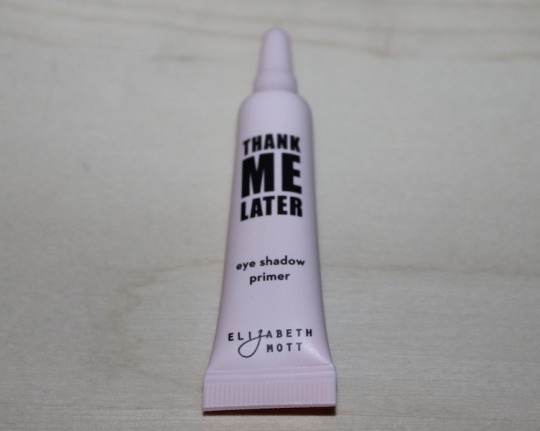
Price: $20
Claims: Beloved Eye Primer - Sometimes it’s the behind the scene help that makes the star truly shine. Sometimes, those people even steal the show! This cruelty-free primer enhances your eyeshadow and protects your makeup all day. Have a dinner date after work? No worries, this eyeshadow primer stays locked in all day. So apply in the morning and go all night long without worrying. Need to fit in a quick workout and don’t have time to reapply. We have you covered. Dries quickly and transparently prepping your eyelids for a smooth and even application of your shadow.
Why it’s SOOO good:
It’s Cruelty-Free
Paraben-free formula with a sebum-controlling powder that combats oiliness
Pearl powder that enhances eye shadow color, brightens skin and balances skin tone
Lightweight, well-balanced priming formula that prevents creasing and locks the color payoff in all day
Weightless feeling that’s non-greasy and long-lasting
Evens out the skin tone of eyelids
Ingredients:
Cyclopentasiloxane: Lightweight silicone with a silky, slippery feel that functions as a skin/hair conditioning agent.
Talc: An earth mineral used as a texturizer in cosmetics and also to help make them opaque.
Isododecane: A hydrocarbon ingredient most often used as an emollient. Thanks to its low viscosity and density, it has a high spreadability. Isododecane leaves a weightless feeling on the skin and evaporates easily.
Cyclohexasiloxane: A silicone. Primarily works as a skin conditioning agent and emollient. Like all other silicones, this ingredient has a unique fluidity that makes it easily spreadable. When applied to the skin, it gives a silky & slippery feeling to the touch and acts a mild water repellent by forming a protective barrier on the skin. It can also fill in fine lines/wrinkles, giving the face a temporary “plump” look.
Disteardimonium Hectorite: A vegetable-derived suspending agent used to thicken oil-based products and serve as a stabilizer for emulsions
VP/Hexadecene Copolymer: Synthetic polymer that functions as a binding agent, texture enhancer, and dispersing agent.
Polyisobutene: Polymer of the hydrocarbon isobutylene obtained from petroleum oil. It functions as a thickening and film-forming agent and does not penetrate skin due to its large molecular size.
Trihydroxystearin: Mixture of glycerin and fatty acids that is used as an emollient and thickening agent.
Bismuth Oxychloride: A synthetically prepared white, crystalline powder. A derivative of the metal Bismuth. Functions as a colorant, adding a white pigment to cosmetic products. It's frequently contained in makeup because it provides good slip, a silky feel and an excellent dermal adhesion that enables makeup to stay on the skin for long periods of time. It's especially popular with mineral powder makeup because can give either a white shimmer or pearlescent matte finish to the face. This glow serves several aesthetic purposes because, by reflecting light away from the skin, it helps camouflage wrinkles and age spots. This ingredient also functions as a bulking agent for liquid formulations.
Silica Dimethyl Silylate: A silica derivative used as an anti caking agent, bulking agent, slip modifier, viscosity increasing agent, emollient, and most often as a suspending agent. It is often found in cosmetics because of its ability to thicken while moisturizing, and provide long-lasting wear.
Trimethylsiloxysilicate: A silicone. It is a skin conditioning agent, and it is considered a soft skin adhesive. It can be used as an anti-foaming agent.
Propylene Carbonate: Liquid used as a solvent and film-forming agent.
Sorbitan Sesquioleate: An emollient. It is added to formulas as a skin soother and moisturizer and is derived from sorbitol, a humectant.
Beeswax: Natural substance made by bees to build the walls of their honeycomb. It is a thickening agent that has some emollient properties
PEG-40 Stearate: Functions as a cleansing agent, but also helps keep ingredients solubilized.
Caprylyl Glycol: Skin and hair conditioning agent that may be plant-derived or synthetic. Often used as part of a preservative blend in cosmetics.
Dimethicone: A type of silicone, forms a permeable barrier that works to prevent moisture loss and impart a wonderfully silky feel.
Ethylhexylglycerin: A synthetic skin-softening agent also used as a preservative, a carrier, or suspending agent for other preservatives such as phenoxyethanol.
1,2-Hexanediol: A widely used humectant and coupling agent. It is especially useful when bonding silicone products and can be used at lower concentrations than many other coupling agents, therefore reducing its irritation likeliness.
Methicone: A silicone based polymer that is used as a skin conditioning agent and surface modifier. It is primarily used to create a film or barrier for makeup to stick to. This barrier prevents sweat and oils from coming through underneath which would normally cause makeup to wear off. Methicone and all silicone polymers, have a large molecular weight; it is unlikely to be absorbed into the skin, helping it to serve as this barrier between the skin and other products, and also preventing it from penetrating the skin itself.
Tocopheryl Acetate: Its substantiated benefits include enhancing the efficacy of active sunscreen ingredients, reducing the formation of free radicals from exposure to UV rays, promoting the healing process, strengthening the skin's barrier function, protecting the skin barrier's lipid balance, and reducing transepidermal water loss. Attributed with antioxidant, anti-aging, moisturizing, anti-inflammatory, and enhanced SPF properties, tocopherol acetate is valued both as a dietary supplement and skincare active.
Mica: Earth mineral included in products to give them sparkle and shine. The level and look of the shine mica provides depends on the color and how finely it’s milled. Mica's sheer, translucent and skin-hugging properties make it a popular ingredient in mineral powders. Mica powder reflects light from the face because of its glittering or shimmering properties, and can create the illusion of a smoother, softer and more radiant skin tone.
Titanium Dioxide: An earth mineral used in sunscreens that is capable of blocking both UVA and UVB rays; also used as a pigment.
Iron Oxides: Natural oxides of iron (iron combined with oxygen); pigments are used to enhance colors in cosmetics.
My Thoughts: I adore Elizabeth Mott Thank Me Later Eye Primer. I was lucky enough to receive a same size in one of my ipsy bags. It came in a baby pink squeeze tub with black lettering. It has pointed tip that dispenses the product perfectly and a secure cap that makes it travel friendly. The product itself is a pearl pink but once applied it becomes transparent, its great for any skintone. Thank Me Later Eye Primer has a mousse texture, that becomes silky once applied. A little goes a long way, I only use a small dot for each eyelid. Its incredibly lightweight so it absorb pretty quickly.
Elizabeth Mott Thank Me Later Eye Primer is beyond amazing. It locks in my eyeshadow and concealer. It even helps reduce creasing throughout the day. I see a change in my eyeshadow, its more vivd and intense in pigment. The only drawback would be that this eyeshadow primer did not even-out my skintone like it claims it does.
Would I purchase Elizabeth Mott Thank Me Later Eye Primer? Yes,I love it! I believe its worth the splurge.
Pros:
Sample size from Ipsy
Baby pink squeeze tub
Pointed tip that dispenses product perfectly
Secure cap that makes it travel friendly
Pearl pink to transparent
Can use on any skintone
Mousse texture
Silky finish
A little goes a long way
Lightweight
Absorb quickly
Locks in eyeshadow & concealer
Reduces creasing
Eyeshadows are more vivd & intense in pigment
Cons:
Does not even-out skintone
If you found this review helpful please click on the heart or reblog. Feel free to reply with your thoughts on the product.
#Elizabeth Mott Thank Me Later Eye Primer#Elizabeth Mott#eye primer#eyeshadow primer#bittersweetjj#bittersweetjj blog#bittersweetjj blogs#bittersweetjj review#bittersweetjj reviews#review#reviews#blog#blogs#reblog#reblogs#like#likes#love#loves#hearts#heart#reply#beauty#beauty blog#beauty blogs#beauty review#beauty reviews#beauty product#beauty products#tumblr
9 notes
·
View notes
Text
Peter Thomas Roth Water Drench Hyaluronic Cloud Cream
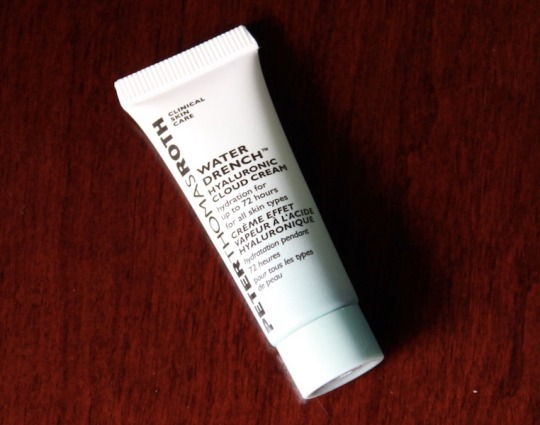
Price: $22 / $52
Claims: Drench your skin with a liquid cloud of moisture drawn from the atmosphere. This concentrated 30% Hyaluronic Acid Complex cream provides up to 72 hours of hydration—even after cleansing. Three molecular sizes of Hyaluronic Acid, a potent hydrator that can constantly attract and retain up to 1,000 times its weight in water from moisture in the atmosphere, help replenish skin to make it appear more supple, full and smooth. Ceramides help lock in moisture while ProHyal+® helps improve hydration for healthier-looking skin. Antioxidant-rich Elderberry helps defy the look of aging. The appearance of fine lines and wrinkles is visibly reduced, leaving a silky, hydrated and more youthful-looking complexion. Oil-free, alcohol-free, fragrance-free.
Ingredients:
Hyaluronic Acid: A protein; used as an excellent skin conditioner and humectant, it helps prevent skin dehydration.
Water: Primarily used as a solvent in cosmetics and personal care products in which it dissolves many of the ingredients that impart skin benefits, such as conditioning agents and cleansing agents. Water also forms emulsions in which the oil and water components of the product are combined to form creams and lotions.
Glycerin: An emollient and humectant derived from vegetable oils that helps skin retain moisture.
Cyclopentasiloxane: Lightweight silicone with a silky, slippery feel that functions as a skin/hair conditioning agent.
Dipropylene Glycol: Used as a solvent, it has also found use as a fragrance, masking agent and in controlling the viscosity of a formulation.
Dimethicone: A type of silicone, forms a permeable barrier that works to prevent moisture loss and impart a wonderfully silky feel.
Cyclohexasiloxane: A silicone. Primarily works as a skin conditioning agent and emollient. Like all other silicones, this ingredient has a unique fluidity that makes it easily spreadable. When applied to the skin, it gives a silky & slippery feeling to the touch and acts a mild water repellent by forming a protective barrier on the skin. It can also fill in fine lines/wrinkles, giving the face a temporary “plump” look.
Yeast Extract: Large group of fungi that ferment sugars; yeast is a source of beta-glucan, which is a good antioxidant. The types of yeast used in cosmetic products are not harmful and in fact likely contribute to creating a healthier-looking skin surface due to their softening and conditioning action.
Sodium Hyaluronate: The sodium salt of hyaluronic acid, which is a protein occurring in the skin. An excellent skin conditioner and humectant, it helps prevent skin dehydration.
Ceramide EOP: Ceramides are necessary for their water-retention capacity and adding them to a skincare product helps provide replenishing and restoring benefits. Ceramides work best for skin when they’re combined with other replenishing ingredients like fatty acids and cholesterol. These lipid mixtures work in multiple ways to improve skin’s texture, suppleness, and help calm signs of sensitivity.
Ceramide EOS: Ceramides are necessary for their water-retention capacity and adding them to a skincare product helps provide replenishing and restoring benefits. Ceramides work best for skin when they’re combined with other replenishing ingredients like fatty acids and cholesterol. These lipid mixtures work in multiple ways to improve skin’s texture, suppleness, and help calm signs of sensitivity.
Ceramide Ap: Ceramides are necessary for their water-retention capacity and adding them to a skincare product helps provide replenishing and restoring benefits. Ceramides work best for skin when they’re combined with other replenishing ingredients like fatty acids and cholesterol. These lipid mixtures work in multiple ways to improve skin’s texture, suppleness, and help calm signs of sensitivity.
Ceramide NP: Ceramides are necessary for their water-retention capacity and adding them to a skincare product helps provide replenishing and restoring benefits. Ceramides work best for skin when they’re combined with other replenishing ingredients like fatty acids and cholesterol. These lipid mixtures work in multiple ways to improve skin’s texture, suppleness, and help calm signs of sensitivity.
Ceramide NS: Ceramides are necessary for their water-retention capacity and adding them to a skincare product helps provide replenishing and restoring benefits. Ceramides work best for skin when they’re combined with other replenishing ingredients like fatty acids and cholesterol. These lipid mixtures work in multiple ways to improve skin’s texture, suppleness, and help calm signs of sensitivity.
Sambucus Nigra Fruit Extract (Elderberry): Also known as black elderberry or Sambucus nigra, this dark purple to black shrub-growing berry has potent antioxidant properties due to the flavonoid and various polyphenol compounds naturally present in the fruit. Elderberry also has remarkable skin-soothing effects and can help defend skin’s appearance from environmental pollutants.
Hydrolyzed Silk: Protein substance (also called sericin) formed by converting silk, which is the soft, lustrous thread obtained from the cocoon of the silkworm. Silk protein can have water-binding properties for skin. However, whether the protein applied to skin is derived from animals or plants, the skin can’t tell the difference. There is a small amount of research showing silk protein may have topical antioxidant properties
Sodium Pca: Natural component of skin, PCA (pyrrolidone carboxylic acid) is also a very good hydrating agent. Sodium PCA also functions as a skin-replenishing ingredient.
Tocopherol: Used as an antioxidant and skin conditioner.
Ascorbyl Palmitate: Stable and nonacidic form of vitamin C that is effective as an antioxidant. Particularly effective at reducing environmental damage.
Caprooyl Phytosphingosine: A mixture of fatty acids caproic acid and phytosphingosine, this ingredient works to replenish and restore a healthier-looking skin surface, creating a smooth, hydrated feel. As a component of naturally-occurring ceramides, caprooyl phytosphingosine is brilliant for stopping moisture loss from skin’s uppermost layers.
Caprooyl Sphingosine: A mixture of fatty acids caproic acid and sphingosine, this ingredient works to replenish and restore a healthier-looking skin surface, creating a smooth, hydrated feel. As a component of naturally-occurring ceramides, caprooyl sphingosine is brilliant for stopping moisture loss from skin’s uppermost layers.
Saccharide Isomerate: Good water-binding agent and emollient for skin, and particularly helpful for dry skin.
Saccharomyces Magnesium Ferment: Extract of yeast fermented in the presence of magnesium ions. There is no known benefit for skin, though it may have antioxidant properties.
Saccharomyces Iron Ferment: Extract of yeast fermented in the presence of iron ions. There is no known benefit for skin, though it may have antioxidant properties.
Saccharomyces Copper Ferment: Extract of yeast fermented in the presence of copper ions. There is no known benefit for skin, though it may have antioxidant properties.
Saccharomyces Silicon Ferment: Extract of yeast fermented in the presence of silicon ions. There is no known benefit for skin, though it may have antioxidant properties.
Saccharomyces Zinc Ferment: Extract of yeast fermented in the presence of zinc ions. There is no known benefit for skin, though it may have antioxidant properties.
Olea Europaea (Olive) Leaf Extract: Antioxidant-rich, emollient oil; helps fight damage caused by free radicals to protect, condition, and seal moisture into skin without clogging pores.
Methyl Gluceth-20: Synthetic liquid that functions as a water-binding and skin-softening agent.
Ethylhexylglycerin: A synthetic skin-softening agent also used as a preservative, a carrier, or suspending agent for other preservatives such as phenoxyethanol.
Lauryl Peg-9 Polydimethylsiloxyethyl Dimethicone: A silicone polymer that has multiple functions in cosmetic products, including skin/hair softening and texture enhancer.
Cholesterol: Applied topically, cholesterol in cosmetics can help maintain the skin’s healthy feel and appearance. It is also a stabilizer, emollient, and water-binding agent.
Sodium Chloride: Used primarily as a binding agent, thickening agent. and occasionally as an abrasive.
Sodium Citrate: Used primarily to control the pH level of a product, this ingredient also has antioxidant and preservative properties.
Citric Acid: An alpha hydroxy acid and astringent with antioxidant properties; used to help skin maintain its natural pH level or adjust the pH of a product.
Behenic Acid: Fatty acid used as a thickening agent and surfactant.
Propylene Glycol: A versatile moisturizer. Propylene Glycol acts by retaining the moisture content of skin or the formula, preventing the escape of moisture or water.
Ceteareth-25: A fatty alcohol that functions as an emulsifier and surfactant in cosmetics. It may be plant- or animal-derived or made synthetically. Ceteareth-25 also helps to keep ingredients soluble within a formula, allowing remain dispersed evenly throughout an emulsion.
Butylene Glycol: Commonly-used ingredient that has multiple functions in cosmetics, including as a texture enhancer. It’s similar to propylene glycol, but has a lighter texture.
Dimethicone/Peg-10/15 Crosspolymer: A mixture of the silicone dimethicone with PEG-10 and PEG-15.
Cetyl Alcohol: Fatty alcohol used as an emollient, emulsifier, thickener, and carrying agent for other ingredients. It is not an irritant and is not related to SD alcohol, denatured alcohol, or ethyl alcohol. Cetyl alcohol is considered safe for use in cosmetics.
Disodium EDTA: Used as a chelating, meaning it prevents ingredients in a formula from binding with trace elements (mainly minerals) that can be present in water.
Sodium Benzoate: A preservative.
Potassium Sorbate: Used as a preservative, almost always used in conjunction with other preservatives.
Phenoxyethanol: A glycol ether and bactericide (that functions as a disinfectant, antiseptic or antibiotic) that is primarily used as a preservative. It is also seen as a fragrance additive.
Mica: Earth mineral included in products to give them sparkle and shine. The level and look of the shine mica provides depends on the color and how finely it’s milled. Mica's sheer, translucent and skin-hugging properties make it a popular ingredient in mineral powders. Mica powder reflects light from the face because of its glittering or shimmering properties, and can create the illusion of a smoother, softer and more radiant skin tone.
My Thoughts: I don’t know what’s so great about Peter Thomas Roth Water Drench Hyaluronic Cloud Cream. Lucky me I received it in my April 2017 Play! by Sephora box, so I didn’t have to pay full price to test it. I honestly didn’t finish the sample size product because it was so terrible. Its a squeeze tube that has an ombre white to sky blue in color. Totally reminds me of clouds, like the product name!
Water Drench Hyaluronic Cloud Cream is a serum but once applied to the skin it immediately feels like water! During the absorption process I feel a tiny bit of a cooling sensation. However it is very short lived since the serum absorbs very very very quickly. Sometimes its too quick to the point I can’t evenly spread it out in time. Its non greasy and lightweight, but thats only because it feels like I applied nothing at all. Doesn't hydrate my skin at all, my skin more so felt like the Mojave desert. Even with applying more than a dime size amount doesn’t hydration my skin. I didn’t see any changes to my skin, not in the slightest bit. Not even for the texture my skin didn’t feel smooth or soft, nor did it help with fine lines or wrinkles.
Would I purchase Peter Thomas Roth Water Drench Hyaluronic Cloud Cream? That is a hard hell to the no. It lacks serious hydration benefits, I wouldn’t recommend it for anyone who has dry skin. I love how Peter Thomas Roth claims it last 72 hours however they recommend applying twice a day. The claim of 72 hours is completely bogus.
Pros:
Received in April 2017 Play! by Sephora box
Beautiful sky colored squeeze tube
Texture serum
Once applied feels like water
Cooling sensation
Non greasy
Lightweight
Cons:
Absorbs too quickly
Hard to spread evenly
Doesn’t hydrate at all
Feels like it dries out my skin
Skin doesn’t feel smooth or soft
Doesn’t help with fine lines or wrinkles
Bogus 72 hour claim
Expensive
If you found this review helpful please click on the heart or reblog. Feel free to reply with your thoughts on the product.
#Peter Thomas Roth Water Drench Hyaluronic Cloud Cream#Peter Thomas Roth#Water Drench Hyaluronic Cloud Cream#beauty#beauty blog#beauty blogs#beauty review#beauty reviews#beauty product#beauty products#review#reviews#blog#blogs#like#likes#love#loves#heart#hearts#reply#reblog#reblogs#skincare#skincare blog#skincare blogs#skincare review#skincare reviews#skincare product#skincare products
4 notes
·
View notes
Text
Sephora Collection LashCraft Length & Volume Mascara
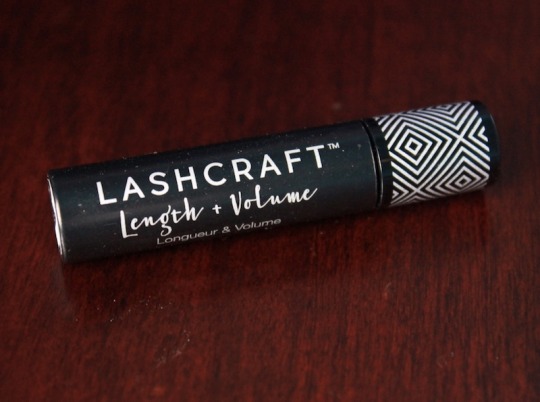
Price: $12
Claims: A jet-black mascara with a unique two-sided, flat paddle wand. Sephora LashCraft Length & Volume Mascara lengthens, defines, and volumizes lashes with a unique paddle brush. The flat shape and flexible bristles expertly lift lashes up from the root for smooth length and definition to the max. The jet-black, high performance formula is infused with nylon for a sleek, clump-free and stay-all-day look.
Ingredients:
Water: Primarily used as a solvent in cosmetics and personal care products in which it dissolves many of the ingredients that impart skin benefits, such as conditioning agents and cleansing agents. Water also forms emulsions in which the oil and water components of the product are combined to form creams and lotions.
Iron Oxides: Natural oxides of iron (iron combined with oxygen); pigments are used to enhance colors in cosmetics.
Cyclopentasiloxane: Lightweight silicone with a silky, slippery feel that functions as a skin/hair conditioning agent.
Acrylates Copolymer: A stabilizer mostly used in styling products to set the hair, add body, and protect it from humidity. It possesses a multitude of functions and can work as a film forming agent, hair fixative agent, suspending agent and antistatic agent. It’s also sometimes used as a waterproofing agent, as well as an adhesive.
Palmitic Acid: Obtained from palm oil; used as a surfactant.
Stearic Acid: Fatty acid used as an emollient and emulsifier. It has been shown to protect skin's surface against water loss and help shore up skin's protective barrier. Stearic acid may be synthetic or animal-derived.
Triethanolamine: Used in cosmetics as a pH balancer and emulsion stabilizer.
Acacia Senegal Gum: Herb that can have skin soothing properties, but is used primarily as a thickening agent.
Polybutene: A oligomeric oil, sometimes derived from petroleum, that is used in its hydrogenated form, as a binder, epilating agent, thickener and lubricant. It is naturally tacky or sticky and is also used for its adhesive properties.
Nylon-12: Powder substance used as an absorbent and texture enhancer. When present in high amounts in skincare or makeup products, nylon-12 tends to have mattifying properties.
Phenoxyethanol: A glycol ether and bactericide (that functions as a disinfectant, antiseptic or antibiotic) that is primarily used as a preservative. It is also seen as a fragrance additive.
Aminomethyl Propanediol: Used to adjust pH in cosmetics.
Panthenol: Member of the B complex family of vitamins. A moisturizing humectant and emollient.
Polyvinyl Alcohol: A synthetic polymer of vinyl alcohol that functions in cosmetics as a gel-based thickener, film-forming, and binding agent. Used quite a bit in peel-off facial masks, this type of alcohol may pose a risk of aggravating skin unless combined with other ingredients that offset this potential, such as glycerin, emollients, or other skin-repairing ingredients.
VP/VA Copolymer: A film former. Has the ability to inhibit the hair (or lashes) from absorbing moisture; it dries and forms a thin barrier on hair, nails or skin. When used in hair care products, it allows hair to hold a style longer by preventing moisture from entering the hair shaft. VP/VA Copolymer is also used to hold together the ingredients of a compressed tablet or cake and helps to distribute or to suspend an insoluble solid in a liquid. Also used as viscosity builders of water-based and oil-based types of products.
Polyquaternium-10: Conditioning, moisturizing, anti-static agent. A water soluble, white granulated powder. It is also considered a film former, supplying a sheen and coating to hair strands by easily being absorbed by proteins.
Ethylhexylglycerin: A synthetic skin-softening agent also used as a preservative, a carrier, or suspending agent for other preservatives such as phenoxyethanol.
Hydrogenated Olive Oil Stearyl Esters: Acts as an emulsion stabilizer and hair and skin conditioning agent. It considerably facilitates the application of a cosmetic product and at the same time provides the skin with outstanding emollience, softness and a fine silky touch at the time of application. It is also important to mention that it does not leave a greasy finish since it is present in the product in a very low proportion.
Acrylates/Ethylhexyl Acrylate Copolymer: Film Former
Copernicia Cerifera Wax: Natural, hard wax obtained from the leaves of palm trees. Used primarily as a thickening agent, but also has film-forming and absorbent properties.
Laureth-21: Surfactants, cleansing agents, emulsifiers and solubilizers.
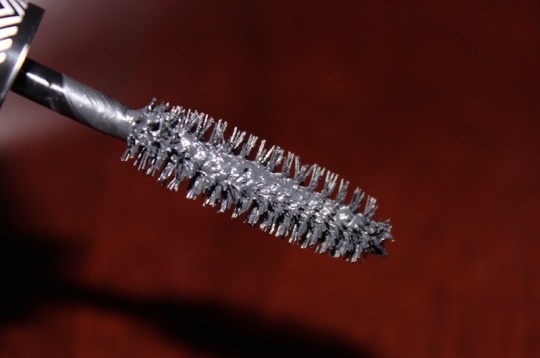
My Thoughts: I received Sephora Collection LashCraft Length & Volume Mascara in my February 2017 Play! by Sephora box. I was really excited to try the mascara since it had a uniquely shaped brush. It best described as a paddle shape brush. I use the flat paddle side first basically to coat all my lashes with the formula which it also lengths it. I take the comb side to separate the lashes from root to tip. Than I use the comb on the tips to lift and curl the lash. The end results is long and lush lashes.
What really sucks is that Sephora Collection LashCraft Length & Volume Mascara formula goes bad very quickly once I opened the mascara. I was only able to use it twice in its prime before it went south. The formula tends to get very stringy and clumpy. Mostly likely due to the Nylon formula. It completely destroys the brush as well, but just the comb side, it tends to get clumped together. Which is bad for application because I can’t separate the lashes. I always end up with fallout during application and after, its a big mess and annoying. On the brighter side regardless of how old the formula is, its super easy and painless to remove. It can even be removed with just water, however I don’t use this method since not all my makeup can be removed with water. But the best part is I never wakeup with raccoon eyes the next morning thats how easy the removal process is.
Would I purchase Sephora Collection LashCraft Length & Volume Mascara? No the formula is terrible its gets old way too quickly even for the cheap price point.
Pros:
Received from February 2017 Play! by Sephora box
Uniquely shaped paddle brush
Flat side coats & lengths
Comb side separates & lifts
Easily removable with water
Cheap
Cons:
Formula quickly gets old
Formula is stringy & clumpy
Clumps up the comb side of the brush
Clumped brush can no longer separate the lashes.
Fallout during & after application
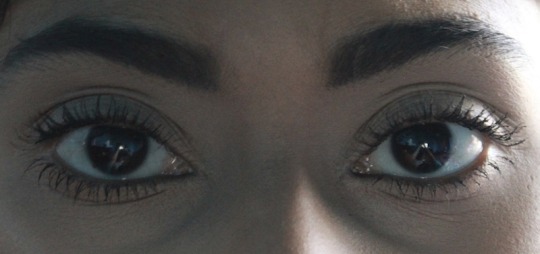
If you found this review helpful please click on the heart or reblog. Feel free to reply with your thoughts on the product.
#Sephora Collection LashCraft Length & Volume Mascara#Sephora Collection#LashCraft Length & Volume Mascara#LashCraft#Mascara#mascara review#mascara reviews#tumblr#tumblr review#tumblr reviews#tumblr blog#tumblr blogs#sephora#sephora review#sephora reviews#sephora collection review#Sephora collection reviews#beauty#beauty blog#beauty blogs#beauty review#beauty reviews#beauty product#beauty products#makeup#makeup review#makeup reviews#makeup blog#makeup blogs#makeup product
4 notes
·
View notes
Photo

Sleeping habits of a luna(tic) #gsd #germanshepherds https://www.instagram.com/p/B0zq9d7pqT_/?igshid=xzp34fu8hx9n
0 notes
Text
Too Faced Primed & Poreless Skin Smoothing Face Primer
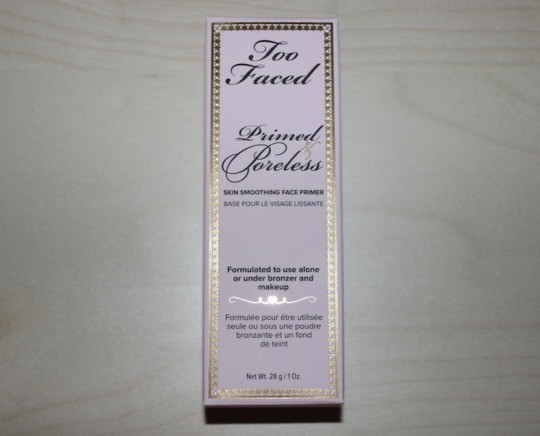
Price: $30
Claims: This primer creates the perfect canvas to allow powders, bronzers and foundations to airbrush onto the skin seamlessly and perfectly blended. Skin appears brighter, fresher and younger. Color stays true and in place all day.
DETAILS:
Virtually erases pores and imperfections
Creates a smooth, airbrushed canvas
Locks down makeup for fresher, longer, and more flawless wear
Helps smooth skin texture and minimize the appearance of fine lines over time
Ingredients:
Cyclopentasiloxane: Lightweight silicone with a silky, slippery feel that functions as a skin/hair conditioning agent.
Dimethicone Crosspolymer: Silicone derivative used as a stabilizing and suspending agent or as a thickener.
Dimethiconol: A silicone. This ingredient functions as a skin/hair conditioner, anti-foaming agent and emollient. Has a unique fluidity that makes it easily spreadable. When applied to the skin, its known for creating a subtle gloss that feels smooth and silky to touch. It also acts a mild water repellent by forming a protective barrier on the skin, and can fill in fine lines/wrinkles on the face, giving it a temporary “plump” look. Has ability to impart a non-greasy emollience that makes the skin/hair look smooth and silky. It's known to provide a less greasy feel than standard silicones without sacrificing any of its lubrication properties.
HDI/Trimethylol Hexyllactone Crosspolymer: Anticaking Agent
Dimethicone/Vinyl Dimethicone Crosspolymer: Texture Enhancer and Silicone
Mica: Earth mineral included in products to give them sparkle and shine. The level and look of the shine mica provides depends on the color and how finely it’s milled. Mica's sheer, translucent and skin-hugging properties make it a popular ingredient in mineral powders. Mica powder reflects light from the face because of its glittering or shimmering properties, and can create the illusion of a smoother, softer and more radiant skin tone.
Caprylic/Capric Triglyceride: Derived from coconut oil and glycerin, it’s considered an excellent emollient and skin-replenishing ingredient. It’s included in cosmetics due to its mix of fatty acids that skin can use to replenish its surface and resist moisture loss. Also function as a thickener, but its chief job is to moisturize and replenish skin. This ingredient’s value for skin is made greater by the fact that it’s considered gentle.
Phenoxyethanol: A glycol ether and bactericide (that functions as a disinfectant, antiseptic or antibiotic) that is primarily used as a preservative. It is also seen as a fragrance additive.
Ethylhexylglycerin: A synthetic skin-softening agent also used as a preservative, a carrier, or suspending agent for other preservatives such as phenoxyethanol.
PEG-40 Hydrogenated Castor Oil: Emollient ingredient that is a mixture of synthetic polyethylene glycol (PEG) with natural castor oil.The weight and size of this ingredient is too large to penetrate beyond skin’s surface, this type of emollient is needed on the surface to stop moisture loss and keep skin feeling soft.
Tocopheryl Acetate: Its substantiated benefits include enhancing the efficacy of active sunscreen ingredients, reducing the formation of free radicals from exposure to UV rays, promoting the healing process, strengthening the skin's barrier function, protecting the skin barrier's lipid balance, and reducing transepidermal water loss. Attributed with antioxidant, anti-aging, moisturizing, anti-inflammatory, and enhanced SPF properties, tocopherol acetate is valued both as a dietary supplement and skincare active.
Retinyl Palmitate: A form of vitamin A that is used to promote natural cell turnover, elasticity, and suppleness and minimize the appearance of fine lines.
Polysorbate 80: A surfactant and emulsifier because of its ability to help other ingredients dissolve in a solvent in which they normally would not be able to dissolve. It can also help to reduce surface tension of substances that need to be emulsified.
PPG-26-Buteth-26: An alcohol-based conditioning agent and surfactant. Ability to restore the appearance of dry, damaged skin and hair by reducing flaking and improving suppleness. It is primarily considered an emulsifying agent with conditioning properties, but is also used as a fragrance ingredient and surfactant.
Allantoin: Highly regarded for its skin soothing, healing and keratolytic (ability to remove excess skin) properties. It helps shed the outer layer of the epidermis and promotes healthy tissue formation. It also softens the skin and enables it to absorb more moisture.
Bioflavonoids: Diverse range of substances that are components of many fruits and vegetables. Many have been shown to have potent antioxidant activity.
Ascorbyl Palmitate: Stable and nonacidic form of vitamin C that is effective as an antioxidant. Particularly effective at reducing environmental damage.
Cyclohexasiloxane: A silicone. Primarily works as a skin conditioning agent and emollient. Like all other silicones, this ingredient has a unique fluidity that makes it easily spreadable. When applied to the skin, it gives a silky & slippery feeling to the touch and acts a mild water repellent by forming a protective barrier on the skin. It can also fill in fine lines/wrinkles, giving the face a temporary “plump” look.
Water: Primarily used as a solvent in cosmetics and personal care products in which it dissolves many of the ingredients that impart skin benefits, such as conditioning agents and cleansing agents. Water also forms emulsions in which the oil and water components of the product are combined to form creams and lotions.
Retinol: A form of vitamin A that is used to promote natural cell turnover, elasticity, and suppleness and minimize the appearance of fine lines.
BHT: A fat soluble synthetic compound, in the form of a white/yellow crystalline solid. Primarily acts as an antioxidant food additive because of its ability to preserve fats. It's also used as a preservative. As an antioxidant, it helps fight against the deterioration of cosmetic products caused by chemical reactions with oxygen. It's also known to work synergistically with other antioxidants.
Titanium Dioxide: An earth mineral used in sunscreens that is capable of blocking both UVA and UVB rays; also used as a pigment.
Chromium Oxide Greens: Coloring Agents/Pigments
Bismuth Oxychloride: A synthetically prepared white, crystalline powder. A derivative of the metal Bismuth. Functions as a colorant, adding a white pigment to cosmetic products. It's frequently contained in makeup because it provides good slip, a silky feel and an excellent dermal adhesion that enables makeup to stay on the skin for long periods of time. It's especially popular with mineral powder makeup because can give either a white shimmer or pearlescent matte finish to the face. This glow serves several aesthetic purposes because, by reflecting light away from the skin, it helps camouflage wrinkles and age spots. This ingredient also functions as a bulking agent for liquid formulations.
Iron Oxides: Natural oxides of iron (iron combined with oxygen); pigments are used to enhance colors in cosmetics.
Camellia Oleifera Seed Extract: Tea plant native to Asia that helps fight free radicals; known for its antioxidant and anti-irritant properties.
Tetrahexyldecyl Ascorbate: A stable form of vitamin C that is considered an analogue of L-ascorbic acid. A greater affinity for skin because its fatty acid component helps aid penetration. It pairs well with other forms of vitamin C and retinol for enhanced effectiveness.
Cyclodextrin: A naturally occurring polysaccharide that is produced from starch. Sometimes referred to as cycloamylose. Used for its odor absorption capabilities. In addition to stabilizing fragrances, it also works to reduce the foam in a solution an enhance the solubility and delivery of other ingredients in a product. As a stabilizer that keeps other ingredients from evaporating and losing efficacy, it's often used in conjunction with vitamin A derivatives (aka retinoids) because they are very sensitive to temperature and light. For this reason, you may find this cyclodextrin in a variety of anti-aging products that contain potent, yet unstable, antioxidant ingredients.
Hedera Helix (Ivy) Leaf/Stem Extract/Hedera Helix Extract: Plant extract that can be sensitizing due to its astringent properties. Despite this, there’s no research demonstrating that tiny amounts of ivy extract applied via skincare products are harmful; however, there also is no reliable information on ivy’s benefits when applied to skin.
Cycloheptasiloxane: Skin-Conditioning Agent
Diacetyl Boldine: Extracted from the bark of the Chilean Boldo tree. Sometimes referred to as DAB or by its trademark name Lumiskin. This ingredient works as a skin lightening agent in skin care products. Its molecular structure resembles that of stress receptors, which leads many to believe that it has the ability to simultaneously block stress receptors and inhibit the body's melanin production (skin pigmentation). For this reason, it's often used to combat hyper-pigmentation, age spots and melasma.
BHA: An acronym for beta hydroxy acid, which is more commonly known as salicylic acid, an ingredient that has multiple benefits for numerous skin types and concerns.
Cyclotetrasiloxane: A silicone. The unique fluid properties of silicone give it a great deal of slip, and in its various forms it can feel like silk on skin, impart emollience, and be a water-binding agent that holds up well, even when skin becomes wet. The research about silicones have proven them to be superior scar-healing ingredients, soothing agents, non-irritating, and uniquely effective delivery and suspending agents for a wide range of cosmetic ingredients.
Cyclotrisiloxane: Hair Conditioning Agent and Skin-Conditioning Agent
Arctostaphylos Uva Ursi Leaf Extract: Bearberry extract (Latin name Arctostaphylos uva ursi) has antioxidant properties, and there is a small amount of research showing it can have skin-brightening properties.
Morus Alba Leaf Extract: Non-fragrant plant extract (Latin name is Morus alba) whose various parts such as the leaf and root, have shown potential to brighten and improve the look of uneven skin tone. Concentration protocols have not been firmly established, so it’s best to look for mulberry extract in combination with other proven skin-brightening ingredients. Mulberry also works as an antioxidant and appears to be non-irritating.
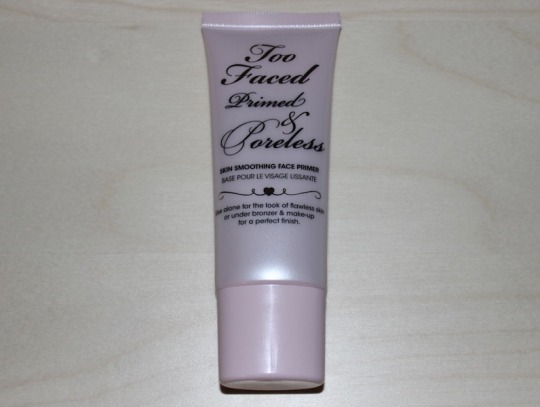
My Thoughts: Too Faced Primed & Poreless Skin Smoothing Face Primer comes in an adorable baby pink squeeze tube with gold and black lettering. The gold lettering does fade over time however the black lettering does not.
The primer is nude in color but once applied it turns colorless. Since its colorless it can be worn with or without makeup on any skintone. I use about a dime size amount for my whole face and neck. The texture is creamy so it makes it easily spreadable on the skin. I only apply the primer gently with my fingertips. I immediately felt my skin become softer and creates a smoother canvas for my makeup application. It does really reduce the size of my pores however it does not minimize the appearance of my fine lines not even overtime. Too Faced Primed & Poreless Skin Smoothing Face Primer does keep my makeup application looking fresh throughout the day.
Would I purchase Too Faced Primed & Poreless Skin Smoothing Face Primer again? No because I need something that can fill my fine lines which this did not meet. I honestly wish it did, especially at that expensive price point.
Pros:
Baby pink squeeze tube
Black lettering doesn’t come off
Nude in color turns colorless
Worn with or without makeup
Can be used on any skintone
Texture is creamy
Easily spreadable
Skin becomes soft
Smoother canvas for makeup
Reduces pores
Keeps makeup fresh
Cons:
Gold lettering eventually comes off
Does nothing for fine lines
Expensive
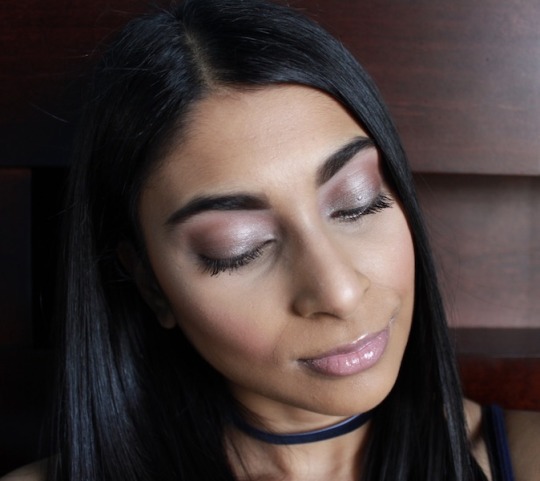
If you found this review helpful please click on the heart or reblog. Feel free to reply with your thoughts on the product.
#Too Faced Primed & Poreless Skin Smoothing Face Primer#Too Faced Cosmetics#too faced#primer#face primer#tumblr#tumblr blog#tumblr blogs#tumblr review#tumblr reviews#reviews#review#blog#blogs#reblog#reblogs#love#loves#like#likes#hearts#heart#beauty#beauty blog#beauty blogs#beauty review#beauty reviews#beauty product#beauty products#makeup
2 notes
·
View notes
Text
Yves Saint Laurent Rouge Pur Couture Lipstick
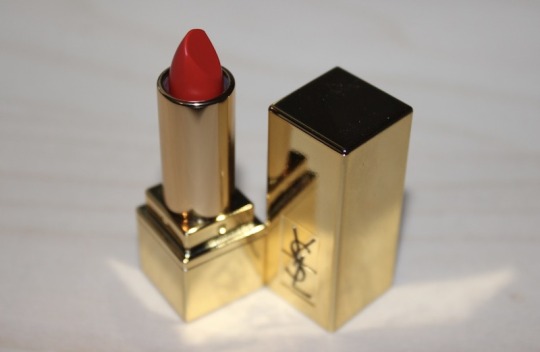
Price: $38.00
Shade: Le Rouge
Claims: In just one stroke, luxurious and highly pigmented color dresses the lips with intense hydration and antioxidant care. In a signature couture jewel-like packaging, Rouge Pur Couture delivers the promise of edgy style and ultimate feminine strength.
Ingredients:
Octyldodecanol: An emollient and emulsifier and solvent. It is a clear, colorless liquid that is often seen as a thickener in moisturizers because of its lubricating and emollient properties. Helps to form emulsions and prevents formulas from separating into its oil and liquid components. It can also reduce the tendency of finished products to generate foam when shaken. Acts as a lubricant on the skin, giving a soft, silky feel.
Butyloctyl Salicylate: The simplest aromatic carboxylic acid. A colorless, crystalline solid naturally found mostly in berries and essential oils. Mainly acts as a PH adjuster and preservative, although it can also be used to add fragrance to a product.
Stearyl/Ppg-3 Myristyl Ether Dimer Dilinoleate: It is an emollient and skin conditioning agent.
Neopentyl Glycol Diheptanoate: Mixture of texture-enhancing ingredient neopentyl glycol and grape-derived fatty acid heptanoic acid. The compound functions as a non-aqueous skin-softening agent and thickener.
Pentaerythrityl Tetraisostearate: Non-aqueous ester that functions as a thickener and binding agent, derived from the ingredient isostearic acid.
Bis-Diglyceryl Polyacyladipate-2: A sticky paste, semi-solid emollient often used as a lanolin substitute. It's valued for its high water-binding properties, excellent adhesion to the skin and glossy finish.
Polyethylene: Form of plastic (synthetic polymer) that has numerous functions in cosmetics products. Rounded polyethylene beads serve as an abrasive agent in many facial scrubs, often used instead of overly abrasive alternatives like walnut shells and ground fruit pits. Also used as a stabilizer, binding agent, thickener, and film-forming agent.
Microcrystalline Wax: Plastic-type, highly refined wax derived from petroleum and purified for use in cosmetics. Used as a thickener and to give products a semi-solid to solid smooth texture.
Polybutene: A oligomeric oil, sometimes derived from petroleum, that is used in its hydrogenated form, as a binder, epilating agent, thickener and lubricant. It is naturally tacky or sticky and is also used for its adhesive properties.
Hydrogenated Coco-Glycerides: A naturally derived emulsifier from glucose and vegetable oils, made of renewable vegetable sources. This skin-conditioning agent forms a barrier on the skin's surface to reduce water loss and softens skin.
Candelilla Wax: Used to protect the skin against moisture loss.
Titanium Dioxide: An earth mineral used in sunscreens that is capable of blocking both UVA and UVB rays; also used as a pigment.
Silica Dimethyl Silylate: A silica derivative used as an anti caking agent, bulking agent, slip modifier, viscosity increasing agent, emollient, and most often as a suspending agent. It is often found in cosmetics because of its ability to thicken while moisturizing, and provide long-lasting wear.
Tocopheryl Acetate: Its substantiated benefits include enhancing the efficacy of active sunscreen ingredients, reducing the formation of free radicals from exposure to UV rays, promoting the healing process, strengthening the skin's barrier function, protecting the skin barrier's lipid balance, and reducing transepidermal water loss. Attributed with antioxidant, anti-aging, moisturizing, anti-inflammatory, and enhanced SPF properties, tocopherol acetate is valued both as a dietary supplement and skincare active.
Caprylyl Glycol: Skin and hair conditioning agent that may be plant-derived or synthetic. Often used as part of a preservative blend in cosmetics.
Water: Primarily used as a solvent in cosmetics and personal care products in which it dissolves many of the ingredients that impart skin benefits, such as conditioning agents and cleansing agents. Water also forms emulsions in which the oil and water components of the product are combined to form creams and lotions.
Mannitol: A plant-derived or lab-made sugar that works in skin care to bind moisture, condition, and also help keep ingredients blended together. It works well with naturally-occurring substances in skin such as hyaluronic acid.
Acacia Senegal Gum: Herb that can have skin soothing properties, but is used primarily as a thickening agent.
Glyceryl Stearate: It acts as a lubricant on the skin’s surface, which gives the skin a soft and smooth appearance. It easily penetrates the skin and slows the loss of water from the skin by forming a barrier on the skin’s surface. It has been shown to protect skin from free-radical damage as well. Used to stabilize products, decrease water evaporation, make products freeze-resistant, and keep them from forming surface crusts. Reduces the greasiness of oils used in certain cosmetics.
Lecithin: Phospholipid found in egg yolks and plants. Widely used in cosmetics as an emollient and water-binding agent. Also has skin-restoring ability.
Tocopherol: Used as an antioxidant and skin conditioner.
Ascorbyl Palmitate: Stable and nonacidic form of vitamin C that is effective as an antioxidant. Particularly effective at reducing environmental damage.
Butylene Glycol: Commonly-used ingredient that has multiple functions in cosmetics, including as a texture enhancer. It’s similar to propylene glycol, but has a lighter texture.
Rosemary (Rosmarinus Officinalis) Extract: Provides moisturizing benefits to support natural skin restoration.
Yeast (Faex) Extract: Comprised of a complex mixture of proteins, sugars, and amino acids, it acts as an excellent humectant and supports natural cell turnover in the skin.
Daucus Carota Sativa (Carrot) Root Extract: Also known as wild carrot. It can have antioxidant properties, but applied topically it can cause sensitivity.
Retinyl Palmitate: A form of vitamin A that is used to promote natural cell turnover, elasticity, and suppleness and minimize the appearance of fine lines.
Citric Acid: An alpha hydroxy acid and astringent with antioxidant properties; used to help skin maintain its natural pH level or adjust the pH of a product.
Mica: Earth mineral included in products to give them sparkle and shine. The level and look of the shine mica provides depends on the color and how finely it’s milled. Mica's sheer, translucent and skin-hugging properties make it a popular ingredient in mineral powders. Mica powder reflects light from the face because of its glittering or shimmering properties, and can create the illusion of a smoother, softer and more radiant skin tone.
Iron Oxide: Natural oxides of iron (iron combined with oxygen); pigments are used to enhance colors in cosmetics.
Titanium Dioxide: An earth mineral used in sunscreens that is capable of blocking both UVA and UVB rays; also used as a pigment.
Calcium Sodium Borosilicate: Use calcium sodium borosilicate as a bulking agent to give products structure.
Propylene Glycol Dibenzoate: Skin-Conditioning Agent
Ammonium Glycyrrhizate: This nourishing natural ingredient helps to keep your skin in a good condition. Its soothing and moisture-retaining properties can make your skin look firmer and smoother.
My Thoughts: I was able to get a sample size of Yves Saint Laurent Rouge Pur Couture Lipstick from Sephora Rewards Bazaar. It came in the color Le Rouge which is a blood red shade. The lipstick comes in a beautiful square gold casing. The casing is mirrored, which was nice for touch ups when needed. Yves Saint Laurent does offer different designs for the golden casing but for an additional cost. For me plain gold is just fine, especially since Yves Saint Laurent is not cheap!
Le Rouge texture is thin and silky texture with a satin finish, which makes it glide on the lips smoothly. Most times I get an even coat in just one swipe with intense pigment. However on some cases when Le Rouge was too silky it would come out sheer and I would have to apply another coat. No matter how many coats I use my lips always feels comfortable and lightweight. I was very surprised the thin texture was able to pack my lips with an intense hydration. I notice if I didn’t wear a lip liner Le Rouge would bleed, with lip liner it did stop a bit but not all the way. The casing mirror came in handy a lot because I found that Le Rouge I would get some on my teeth, it helped so I didn’t have to rummage through my endless bag for a mirror. Luckily the lipstick easy to wipe off if it gets on my teeth. Without eating or drinking the lipstick would last me 4 hours, than fades to a stain. With drinking I would have to touch up every now and than because it does transfer a lot. When it came to eating it turned into a stain. Total removal of Le Rouge does require a makeup remover.
Would I purchase Yves Saint Laurent Rouge Pur Couture Lipstick? No its a little too messy for me with all the bleeding and transferring especially for the price point.
Pros:
Beautiful square mirrored gold casing
Mirrored part be used for touch ups
Thin & silky texture
Satin finish
Smooth application
One swipe has intense pigment
Comfortable & lightweight
Hydrating
Without eating and drinking last 4 hours
Fades to stain
Cons:
Designed casing cost additional
Sometimes its too silky and the pigment becomes sheer
Does tend to bleed even with lip liner
Gets on teeth
Transfers a lot
Have to use makeup remover to get it completely off
Expensive
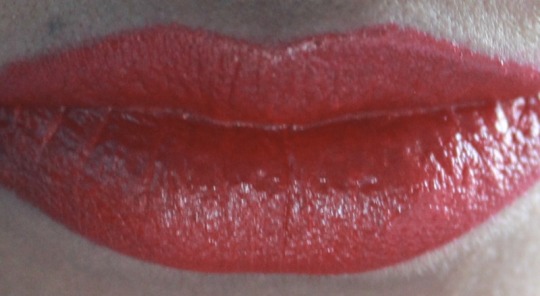
If you found this review helpful please click on the heart or reblog. Feel free to reply with your thoughts on the product.
#Yves Saint Laurent Rouge Pur Couture Lipstick#YSL#Yves Saint Laurent#Rouge Pur Couture Lipstick#Le Rouge#lipstick#lips#lipstick review#lipstick reviews#beauty#beauty blog#beauty blogs#beauty review#beauty product#beauty products#beauty reviews#Sephora Rewards Bazaar#makeup#makeup blog#makeup products#makeup blogs#makeup product#makeup review#makeup reviews#review#reviews#blog#blogs#love#loves
1 note
·
View note